

Why a Peeing Boy Became the Symbol of Brussels (Manneken Pis Story)
By Author Jurga
Posted on Last updated: May 29, 2023
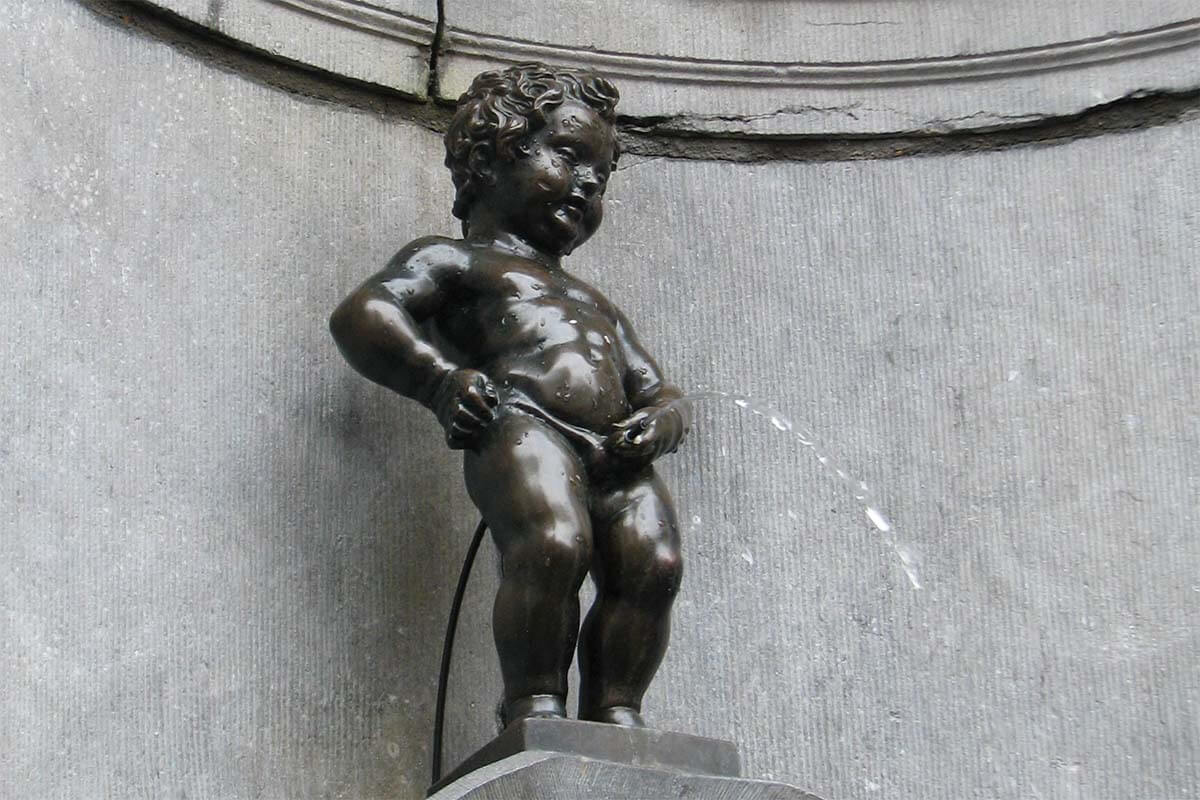
You may have heard about Manneken Pis , the peculiar symbol of Brussels, Belgium.
If you are not familiar with it, Manneken-Pis is a bronze statue of a small naked peeing boy. The iconic fountain dates from the 17th century, with its origins going back to the 14th century. It’s one of the most popular places to visit in Brussels .
Indeed, no visit to Brussels would be complete without taking a selfie with its most famous citizen.
But how did this eccentric little fellow earn such a prominent place in the heart of the city?
Having lived in Belgium for over two decades, I learned that there are a couple of interesting legends that surround the origins of Manneken Pis.
While most guides will tell you the first version, there are several others too, some much more plausible than the most popular tale. In fact, the last explanation is the most convincing and – who know – this could be the real story of Manneken Pis.
So let’s delve into a couple of intriguing myths that surround the origins of the little peeing boy and how it became the symbol of Brussels. Find out!
Good to know: While Manneken Pis is normally naked, he also has hundreds of amazing costumes that he wears on different occasions. So in this article, we also included some pictures showcasing a small part of his impressive garderobe.
At the bottom of this post, you will also find some fun facts about Manneken-Pis and his friends (yes, there are more peeing statues in Brussels!).
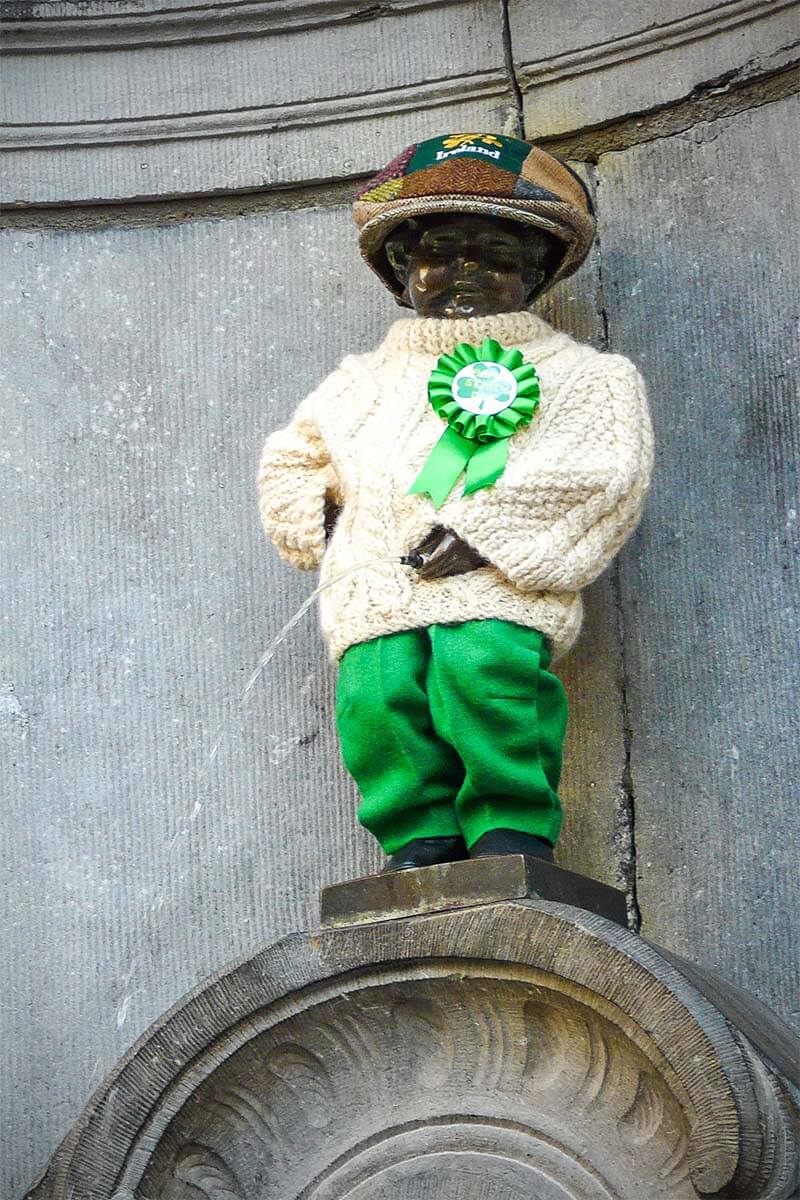
Here are some of the legends surrounding the origins and fame of Manneken Pis:
Legend # 1: Manneken Pis Saves Brussels from Fire
The version where Manneken Pis saves the city from fire is the most popular legend. There are several slightly different versions of this story. It likely dates from the 14th century when most buildings were built of wood and a tiny spark could destroy an entire town in a matter of hours…
It is said that during a period of siege, the citizens of Brussels put up such fierce resistance that the besiegers finally had to retreat. The defeated enemy, however, was so angry that they decided to burn down the city on the way out. They put gunpowder under the ramparts leading to a large powder barrel. Because the water supply of Brussels was sabotaged by enemies, even a small fire could have been fatal to the city.
In the meantime, the citizens of Brussels were celebrating their victory and didn’t notice the danger. A young boy named Julian ( Julien ) spotted the threat and urinated on the enemy’s gunpowder, extinguishing the fuse and saving the city of Brussels from destruction.
In honor of his heroic act, a statue was erected depicting him in his moment of glory.
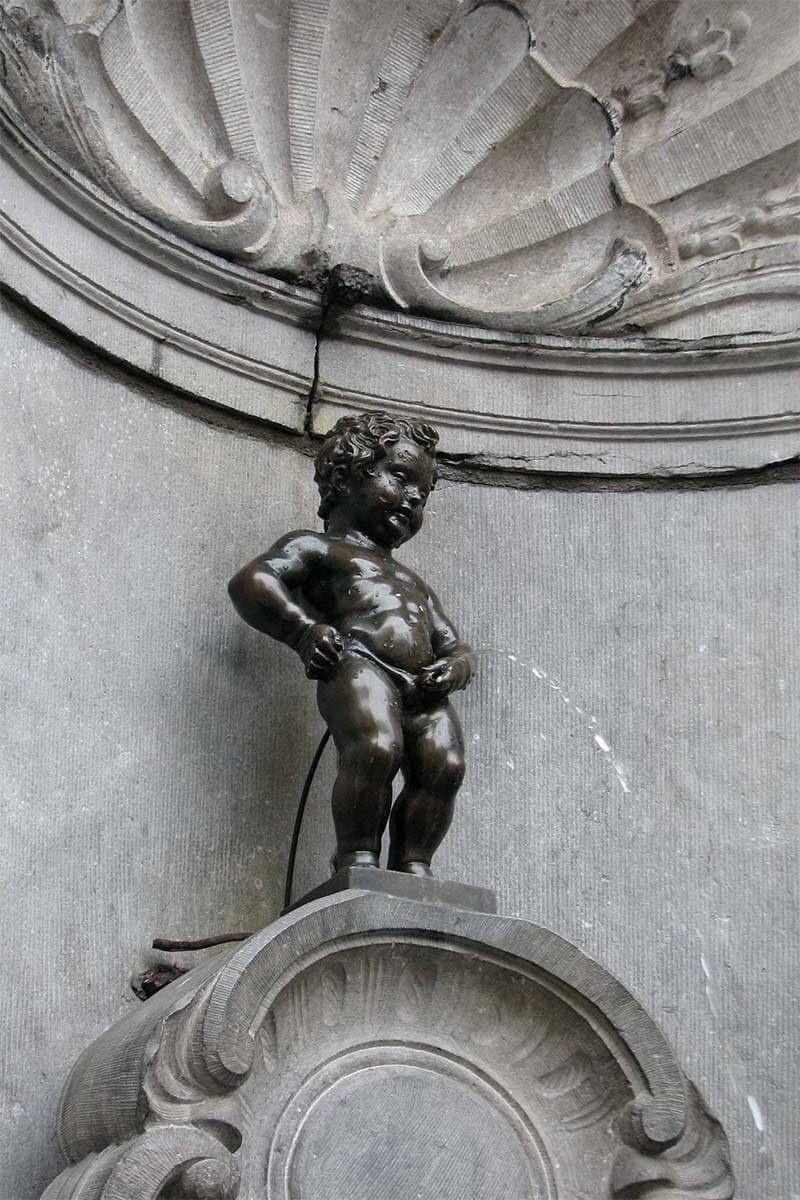
Legend #2: The Lost Boy
According to another enchanting tale, a nobleman lost his son in the busy streets of Brussels. Desperate to find him, the family organized a city-wide search.
After two days of searching, they found the boy urinating on a corner of two streets.
Overjoyed to have found his son, the nobleman decided to immortalize the moment by commissioning the iconic statue of a little peeing boy at that location.
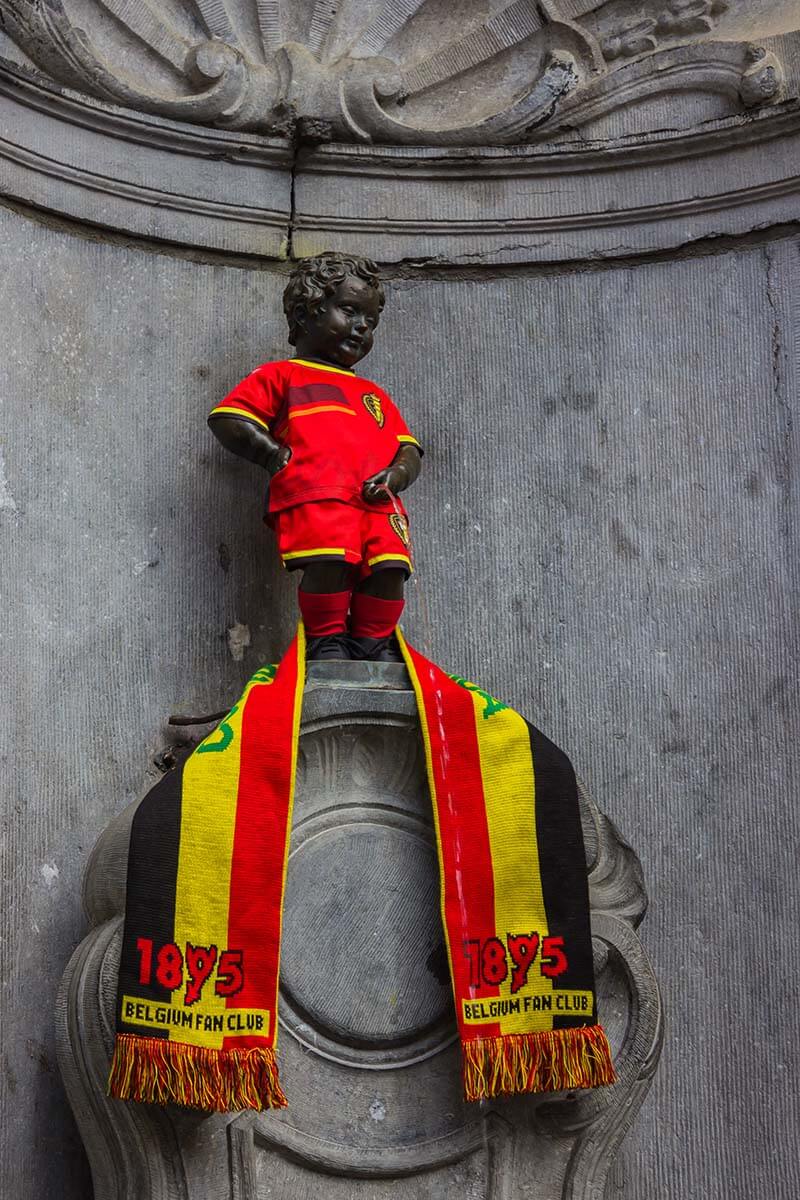
Legend #3: Punished by a Witch
This legend tells a story of a little boy, the son of a nobleman, who abandoned a religious procession because he had to pee. What he didn’t know is that he urinated on the wall of a witch’s house.
The witch was furious and cursed the little boy. To punish him, she turned him into a statue so that he would continue his indecent peeing forever and ever.
This story has two somewhat different endings. In another version, a good man who had seen everything happen, replaced the boy with a statuette right before the witch cast her spell.
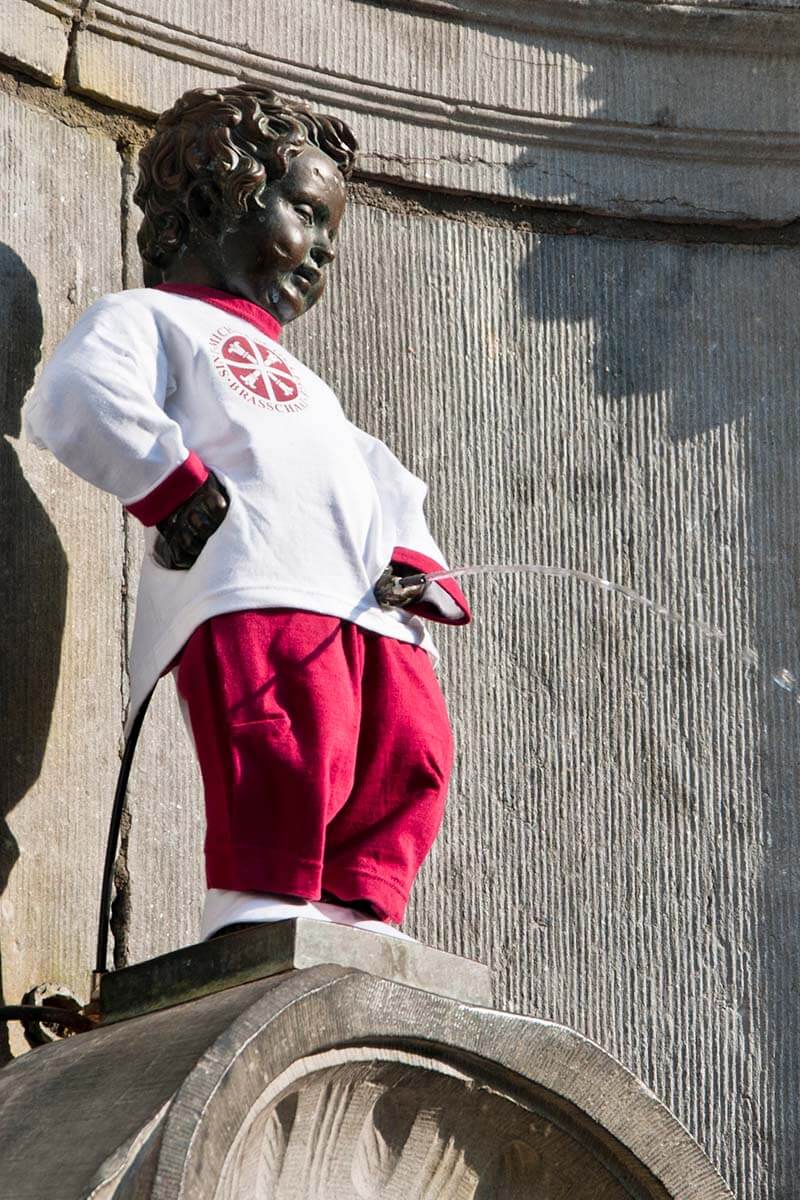
Legend #4: Young Duke Supports His Troops
Yet another legend dates to the 12th century. Following the death of his father, a 2-year-old Duke Godfrey III of Leuven became the Count of Brabant. However, the young Duke had enemies who saw this as a great opportunity to take over the region.
The army was deployed but they needed some motivation to know who they were fighting for. So the young boy was taken to the battlefield at Ransbeek, north of Brussels. His cradle was hung in a tree to oversee the troops and motivate them. Of course, the little boy couldn’t sit there for three days without using a bathroom, so he would stand up in his crib and pee down.
One story says that he urinated on the enemies and they lost the battle. Another version says that the troops simply found it an amusing sight.
Either way, after the victory, they moved the oak tree from which the cradle had hung to Brussels and planted it in the city center. The street was named Oak Street – Rue du Chêne (French) or Eikstraat (Dutch). On the corner, right next to the tree, a statue of a peeing boy peeing was erected. That’s where it still stands today.
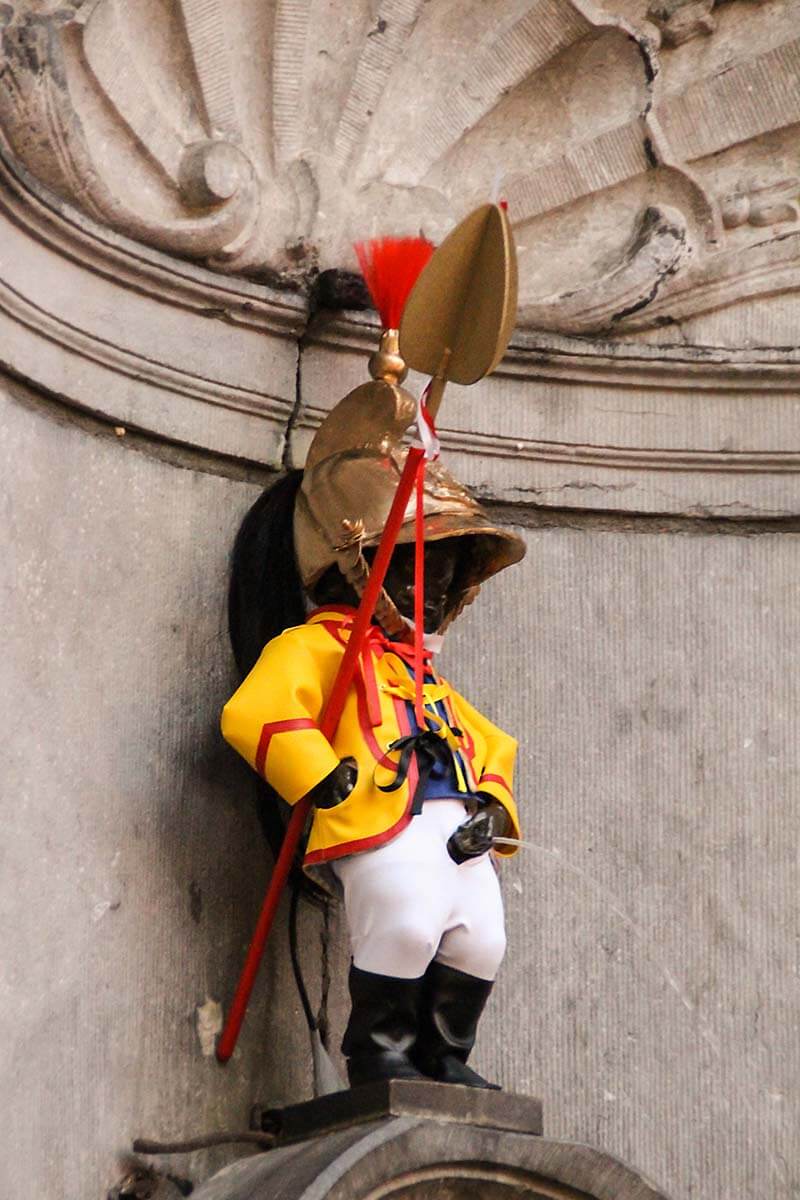
Legend #5: Tribute to Tanneries
This is now considered the most likely, real story behind Manneken-Pis.
According to this legend, the statue of Manneken Pis was erected as a tribute to the many tanneries that were located in this part of Brussels.
Back in the Middle Ages, the urine of small children used to be used to process the leather. The ammonia in the urine and high Ph help soften the animal leather and make it easier to clean and process it.
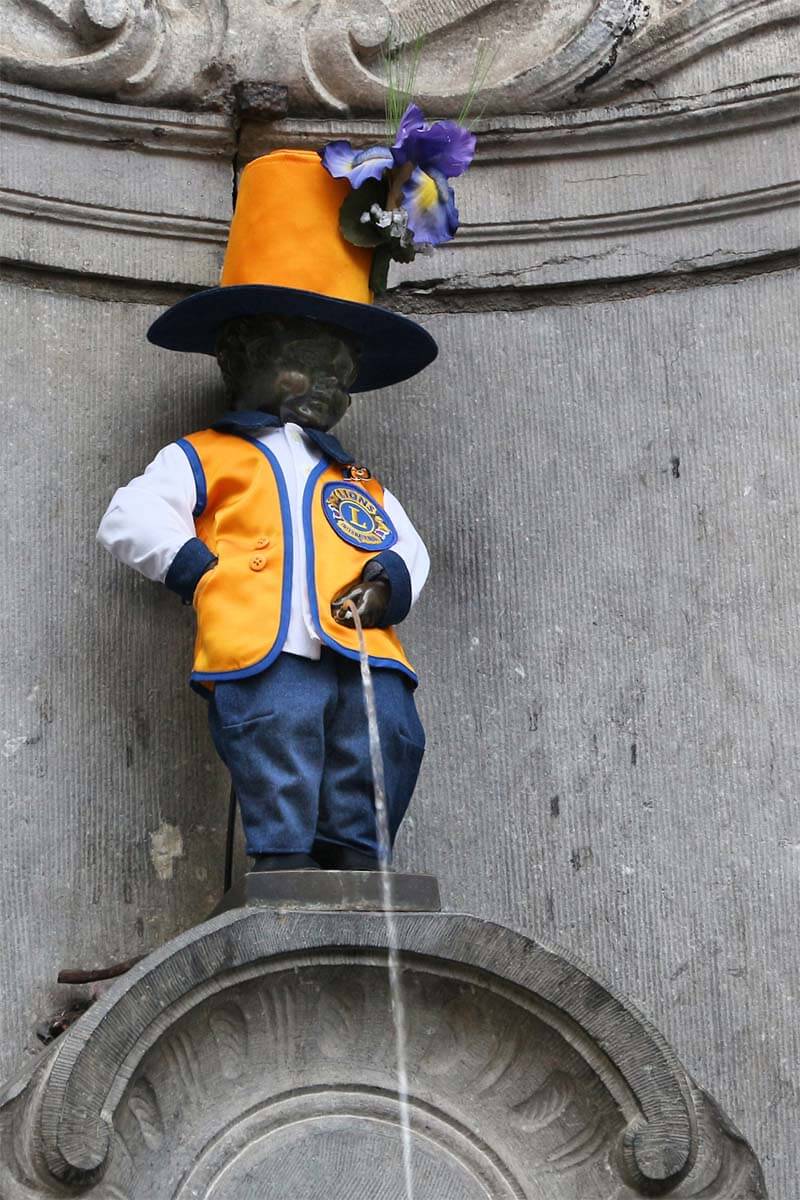
Manneken Pis: Interesting Facts
If the statue of the little peeing boy in Brussels got you intrigued, here are some interesting and fun facts about Manneken Pis:
- Most first-time visitors are always amazed at how small the statue of Manneken Pis is. Indeed, it’s tiny – just 55.5 cm (about 21.9 inches).
- For such a little boy, Manneken Pis is surprisingly old. The original bronze statue dates from 1619 . In addition, there was a similar wooden statue at the same location in the 14th century already.
- Manneken Pis in Brussels has more than a thousand different costumes . They are kept in several museums in Brussels. The costumes are usually changed every 2-3 times a week and are usually worn for a specific occasion. This could be pretty much anything from a national or international holiday, an anniversary of a local school, or to support Belgian sports teams during various competitions…
- The oldest costume of Manneken-Pis dates from 1747 and was gifted by the French King, Louis XV. French soldiers stole the statue angering the people of Brussels. The King felt ashamed of his troops. To make up for it, he declared Manneken-Pis a knight of the Royal and Military Order of St Louis and gifted him a suitable outfit.
- Manneken Pis has been stolen countless times throughout history. In fact, during one such attempt in 1965, the statue was broken and it took months to find the missing piece back (someone threw it in a canal in Brussels). In the meantime, a new bronze statue had been made. When the original was recovered and glued together, it was placed in Brussels City Museum – Maison du Roi (located at Grand-Place). So if you would like to see the original statue of Manneken-Pis, be sure to visit this museum as well. You will also see some of the Manneken-Pis costumes here.
- The town of Geraardsbergen west of Brussels has a similar statue of a peeing boy. They claim that theirs is the oldest one since it dates from 1459, whereas the bronze statue in Brussels is from 1619. However, there was a similar fountain in Brussels in 1388 already, so there is no doubt that Manneken-Pis is originally from Brussels.
- There are many replicas and copies of Manneken-Pis all over the world – from smaller towns in Belgium or Colmar in France to the biggest metropoles in Japan. Indeed, you can find a similar statue of a peeing boy in Hamamatsucho Station in Tokyo.
- Manneken-Pis has similar friends in Brussels – see more info below (with pictures and a map of where to find them!).
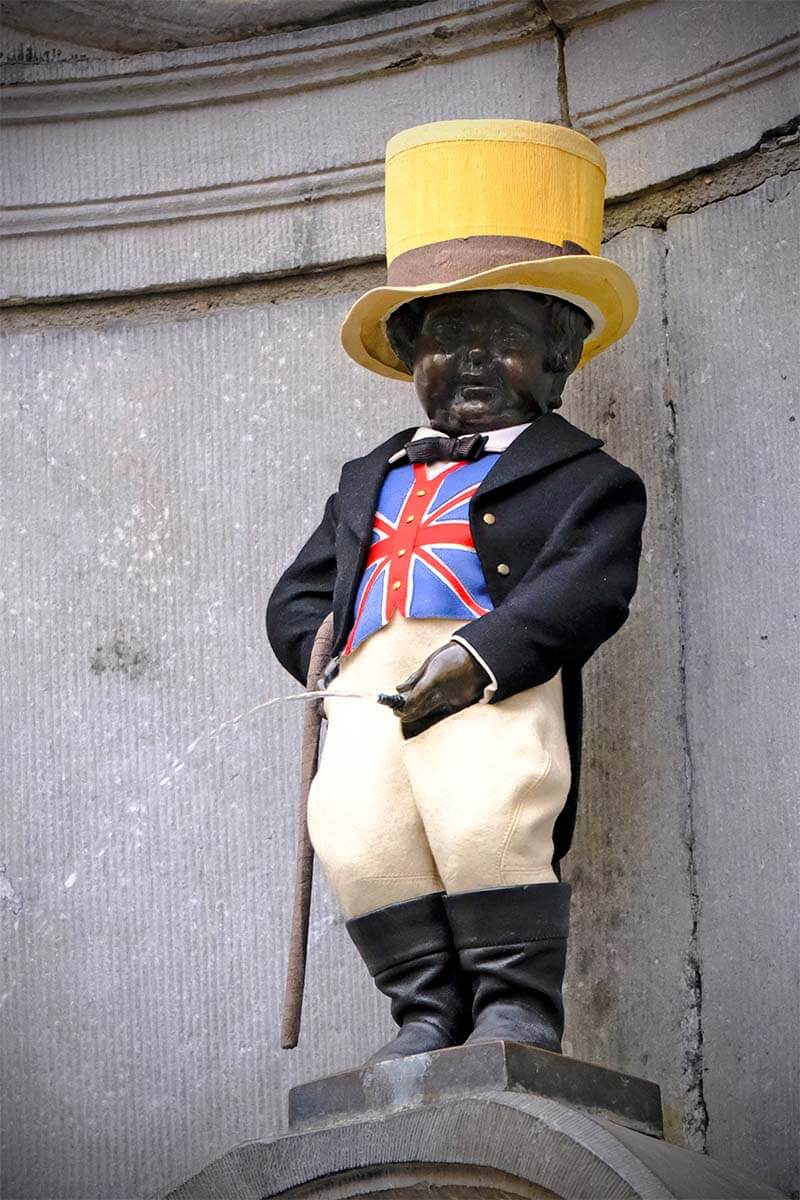
The Friends of Manneken-Pis: Jeanneke Pis & Zinneke
Manneken-Pis is not the only peeing statue in Brussels.
If you are interested, you can also visit his ‘sister’ Jeanneke Pis , and the peeing dog Het Zinneke . They are all located in the city center, so you can easily see them all when visiting Brussels.
Below, you can see the map indicating the location of all these statues.
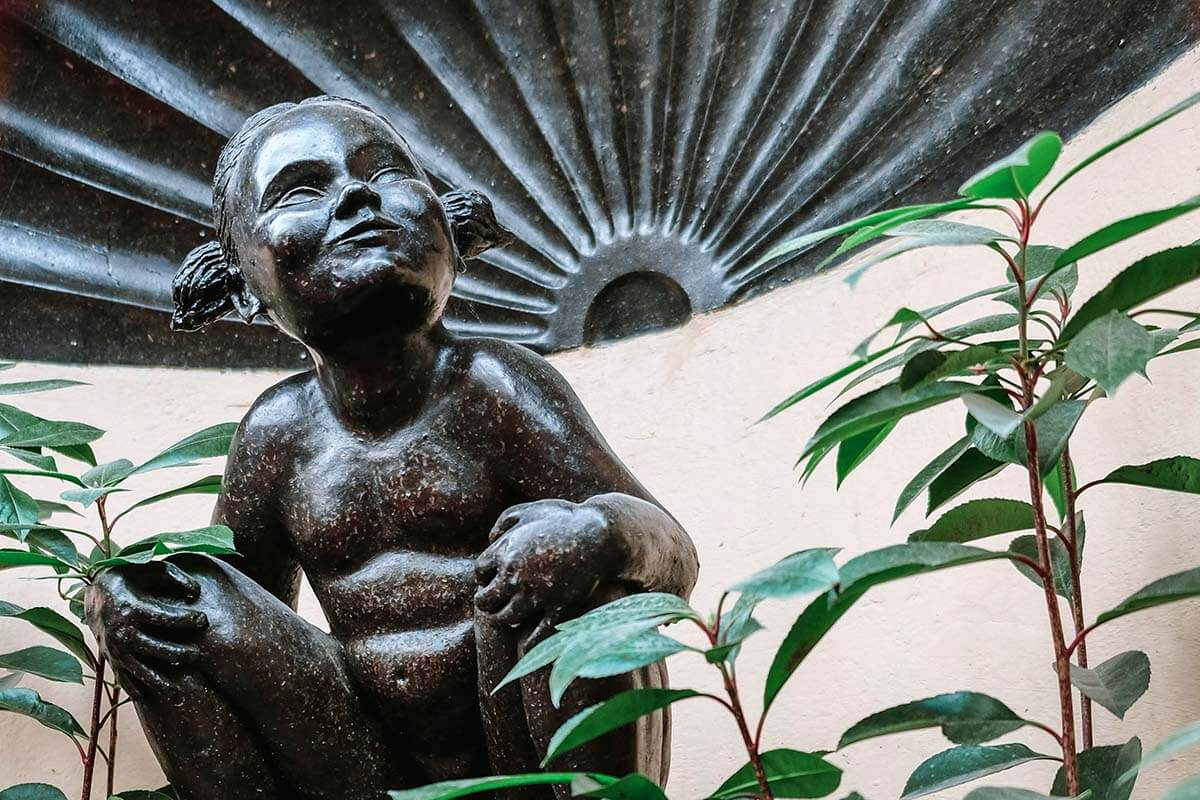
While the true origins of Manneken Pis remain shrouded in mystery, the statue is an unmistakable symbol of Brussels. It reflects the city’s resilience, unique sense of humor, and ability to not take everything too seriously.
So, the next time you go to see Manneken Pis in Brussels, take a moment to reflect on all these legends and the meaning behind its costumes.
There’s definitely more to this seemingly whimsical statue than it looks at first sight!
YOU MAY ALSO LIKE TO READ: Fun Facts About Belgium
More travel inspiration & info for visiting Belgium:
- Itinerary: Belgium Itinerary for 3-4 Days
- Best Things to Do in Brussels
- Where to Stay in Brussels
- Brussels’ Most Popular Hotels
- Brussels Flower Carpet
- Is Brussels Safe?
- Best Things to Do in Bruges
- Bruges Belfry Tower
- Best Things to Do in Antwerp
- Hidden Gems of Antwerp
- Best Things to Do in Antwerp with Kids
- Discover Antwerp by Bike
- Best Christmas Markets in Belgium
- Brussels Christmas Market
- Bruges Christmas Market
- Antwerp Christmas Market
- Belgium in Winter
If you found this post helpful, don’t forget to bookmark it and share it with your friends. Are you on Pinterest? Pin this image!
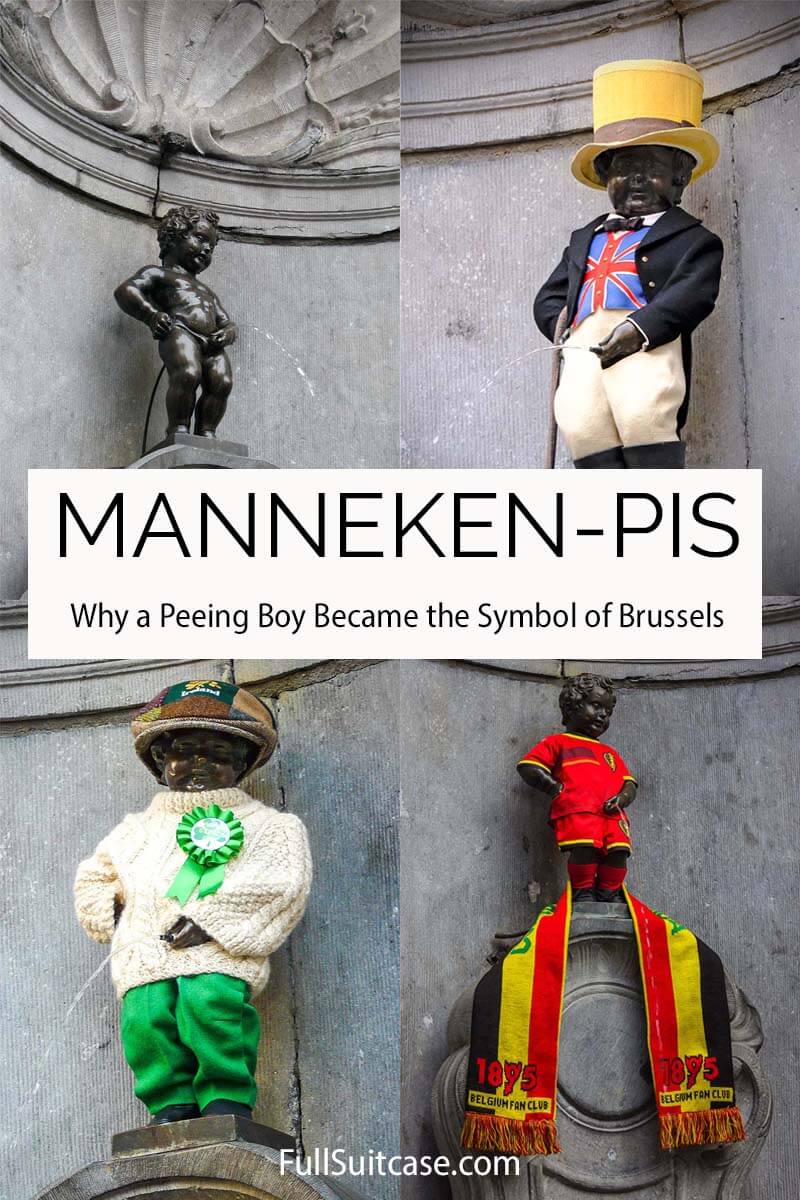
This site uses Akismet to reduce spam. Learn how your comment data is processed .
Michael A Cicchi
Tuesday 30th of May 2023
Yes I do know about this little guy and he is on my Google Maps list. I did not know about his friends though and I never knew about any of the costumes.🤔
Wednesday 31st of May 2023
@Jurga, indeed we will. ✈️👍🙂
Now you can add the little friends of Manneken-Pis to your map too ;). Hope you get to visit Belgium one day, Michael!
18 Monuments in Brussels You Cannot Miss [Local’s Guide]

Are you looking for the most beautiful monuments in Brussels ? Then you have come to the right place!
Belgium’s capital is full of famous landmarks, from the famous Manneken Pis to the remains of the city wall. As I am from Brussels and lived here for many years, I have come to know this city quite well.
Whether you’re planning on spending a day in Brussels or are just curious to know what monuments this city is famous for, this list will answer all of your questions.
Most beautiful monuments in Brussels
So, let’s dive into it, from peeing statues to beautiful cathedrals, here are the most famous landmarks in Brussels.
1. Manneken Pis

As this is one of the most famous landmarks in Belgium , Manneken Pis had to be first on this list.
This unique statue of a peeing little boy is made of bronze and there are some legends associated with it. The most famous one is the story of a boy who extinguished a fire with his tinkle and thus saved Brussels from being burnt out.
As Manneken Pis has over 1,000 costumes , he’s regularly dressed up, so you might see him wearing one of his outfits.

The Atomium was built for the Brussels World’s Fair (Expo 58) in 1958 and it represents an iron crysta l magnified 165 billion times. Reaching 102 m (335 ft), this is one of Belgium’s tallest monuments and one of the most famous landmarks in Brussels.
This monument was built as a tribute to scientific progress and it’s a tribute to Belgian engineering skills at the same time.
Inside, you will find a gallery and exhibition space where you can learn more about the Atomium’s history.
3. Brussels Cathedral

St. Michael and St. Gudula Cathedral (or Brussels Cathedral in short) is Belgium’s main catholic church . As its name predicts, this cathedral is dedicated to Saint Michael and Saint Gudula, who are the patron saints of the city of Brussels.
The church was built in Brabantine Gothic architecture in the 11th century, but it took 300 years to complete it. You will find stunning stained-glass windows inside, but the rest of the interior is quite sober.
As this is the main church of the country, St. Michael and St. Gudula Cathedral is also the place where royal weddings, state funerals and other official ceremonies take place.
4. Town Hall

The Town Hall can be found on the Grand Place (Grote Markt), one of the most beautiful places in Belgium . Built between 1401 and 1455, this is the only remaining medieval building on this square and it’s truly stunning.
The Town Hall was built in Brabantine Gothic architecture, just like Brussels Cathedral (#3 on this list), and it’s believed that it was designed by Belgian architect Jacob van Thienen.
When you look closely, you will see that the Town Hall’s facade is asymmetrical ; the tower is not in the middle of the building.
There’s a legend that says that after discovering the asymmetry, the architect jumped off the building and landed on the spot that’s now marked with a star, but this is not true.
In fact, the star marks the zero point of Brussels and the Town Hall was built over a period of 54 years, which led to different architects being involved in its construction. It’s believed that it’s due to this series of different architects that the building ended up being asymmetrical.
All in all, the Town Hall is one of these amazing landmarks that makes Brussels worth visiting !
5. Galleries Royales Saint-Hubert (Koninginnegallerij)

The beautiful Galleries Royales Saint-Hubert were built in 1847, making it one of the oldest shopping arcades in Europe . With its abundance of luxury shops, this is a great place to go window shopping and take shelter if you’re visiting Brussels on a rainy day .
The galleries were built by Belgian architect Jean-Pierre Cluysenaar, who was inspired by Italian Renaissance architecture.
Don’t forget to visit Neuhaus, Corné Port-Royal, Mary and Leonidas while you’re there, these are some of the best Belgian chocolate brands .
Tip: Check out my post featuring the best shopping centres in Brussels if you would like to go shopping.
6. Brussels Stock Exchange

Called “La Bourse” in French or “De Beurs” in Dutch, the Brussels Stock Exchange is actually Brussels’ former stock exchange building, and it’s argued to be one of the most beautifully decorated monuments in Brussels.
The Bourse was built in the 19th century during a programme of beautification of Brussels’ city centre. It’s located on the famous Boulevard Anspach (Anspachlaan) and was designed by Belgian architect Léon-Pierre Suys.
Today, the Bourse hosts temporary expositions, concerts and other events.
7. Royal Palace of Brussels

This 19th-century palace was the royal residence until 1831 when the royal family moved to the Palace of Laeken.
Today, it still serves as their administrative residence and office. It’s in this palace that the Belgian king receives guests and works with his staff.
It’s good to know that this palace is open to visitors from the 21st of July until the beginning of September every year! You can visit the palace’s majestic rooms and beautiful gardens for free during a visit. This summer, however, it’s closed due to renovation work. It will open again in the summer of 2024.
8. Cinquantenaire Arch

The Cinquentenaire Arch was built for the National Exhibition of 1880 and it commemorates the 50th anniversary of the Belgian Revolution . It serves as the entrance to the Parc du Cinquantenaire (Jubelpark), which is one of the most famous parks in Brussels .
With its two arms extending out, the Cinquentenaire Arch is quite imposing. Inside its arms, you will find three of Brussels’ most famous museums here: Autoworld, the Art and History Museum and the Military Museum.
9. La Monnaie (De munt)

The Royal Theatre of La Monnaie is Belgium’s leading opera house and it has an interesting history.
After Brussels was bombarded by the troops of Louis XIV in 1695, a theatre was placed on the grounds where a coin-minting building stood before. This is where La Monnaie (“the mint” in French) got its name from.
This building was destroyed and replaced, which is when it became an opera house. In the 19th century, however, La Monnaie was partially destroyed by a fire. Belgian architect Joseph Poelaert then turned the building into a mixture of various architectural styles, and this resulted in the monument that you can see today.
10. Saint Catherine’s Church

Built between 1854 and 1874, Saint Catherine’s Church stands on the site where the Sainte-Catherine basin once stood. It was designed in an eclectic style by architect Joseph Poelaert.
Over the years, the existence of this church was threatened a couple of times. The first time was in the 1950s when the authorities wanted to replace it with an open-air car park. Later, in 2011 plans were made to transform the church into a covered market.
Neither of these proposals was executed, though, and instead, the church was renovated.
11. Anneessens Tower

Parts of the medieval city walls that once surrounded Brussels can still be seen today. These fortifications were built to protect the city from invaders.
Anneessens Tower is one of the most impressive remains of these walls. This tower was built in the 13th century and it was part of the first fortifications of Brussels.
A century later, a wider wall was built because the city kept expanding. Most of the first city wall was destroyed, but Anneessens Tower was spared.
12. Jeanneke Pis

Did you know that apart from the peeing little boy Manneken Pis (#1 on this list) and the peeing dog Zinneke Pis (#18 on this list), Brussels is also home to Jeanneke Pis, a statue of a peeing little girl?
Jeanneke Pis was built to attract more people to a small alley in 1987. This statue was commissioned by Denis-Adrien Debouvrie who owned restaurants on this street.
The story goes that after finishing the first sketch of Jeanneke Pis, Debouvrie said: “Now we have gender equality”.
13. Halle Gate

The Halle Gate was built between 1381 and 1383 as one of the seven medieval city gates . It was part of Brussels’ second city wall and back in the day, it was called the Obbrussel Gate , which means “Upper Brussels” in old Dutch.
Today, the Halle Gate has been transformed into a museum where you can learn more about how the city defended itself from attacks during the Middle Ages.
14. Basilica of Koekelberg

The National Basilica of the Sacred Heart in Koekelberg is the largest church in Belgium and the 5th largest church in the world. This church’s construction started in 1905, but because of the two world wars, it was only completed in 1970.
This church was built at the demand of King Leopold II, who was inspired by the Basilique du Sacré-Coeur in Paris . The king never got to see it, though, as he died a couple of years after the construction began.
Apart from the basilica, you will also find a crypt, a chapel, two religious museums, an exposition hall and a restaurant in the complex. On top of that, you can see a beautiful panorama over Brussels from the church’s upper floors.
15. Palace of Justice

The magnificent Palace of Justice is one of the most beautiful monuments in Brussels and it’s Belgium’s most important courthouse .
It was built between 1866 and 1883 by architect Joseph Poelaert, and in order to build it, 3,000 houses had to be destroyed.
When the Germans were chased out of Belgium at the end of WWII, they set fire to the Palace of Justice and its dome collapsed. Soon, a new dome was built, which is taller and narrower than the original one.
Fun fact: Renovation works have been taking place at the Palace of Justice since 1984 and a couple of years ago, the scaffolds got so old that they had to be replaced. I’ve actually never seen this building without any scaffolds, but it’s said that they will be removed in 2024.
16. Church of Our Blessed Lady of the Sablon

The Church of Our Blessed Lady of the Sablon is one of the most beautiful churches in Belgium . This church was founded in the 15 century on the grounds where a small chapel stood before.
According to the story, a statue of the Virgin Mary was stolen from a church in Antwerp . When this statue “miraculously” appeared in the chapel that stood there, it became a place of worship for believers. Because of this, the chapel was replaced by a new sacral building.
The interior of the Church of Our Blessed Lady of the Sablon is quite sober and resembles the interior of Brussels Cathedral (#3 on this list).
17. Church of Sint-Jacob-on-Coudenberg

The beautiful neoclassical Church of Sint-Jacob-on-Coudenberg was built behind the Royal Palace between 1776 and 1787. It’s dedicated to Saint James, one of the Twelve Apostles.
It’s on the stairs of this church that Leopold I, the first king of Belgium , made an oath of allegiance to the Belgian constitution in 1831.
Apart from its beautiful exterior, the interior of this church is worth seeing too. Though quite sober, it houses magnificent Corinthian columns and an altar made of white marble.
18. Het Zinneke

Last but not least, Brussels is home to a third peeing statue: Het Zinneke or Zinneke Pis. This statue of a peeing dog was designed by Belgian sculptor Tom Frantzen in 1998, making it the youngest of Brussels’ peeing statues .
As you might have guessed, this statue is a reference to Manneken Pis (#1 on this list) and Jeanneke Pis (#12 on this list).
The name “Zinneke” comes from the nickname for the people of Brussels and it means “mutt” or “bastard” in the Brussels dialect.
Map of the monuments in Brussels
You will find the places on this list on the map below. Click the pin to see more about each place.

Monuments in Brussels: Final thoughts
As you can see, Brussels is full of beautiful monuments, and if you’re asking me, the Town Hall alone is a pretty good reason to visit Belgium !
I hope that this post has taught you something new and that it inspires you to visit Brussels. With its quirky peeing statues and cobblestoned squares, this city has got a lot to offer, after all.
Are there any famous Brussels landmarks missing from this list? Let me know in the comments below as I’m updating this post frequently.
Read more about Belgium:
- The Best Beer Tours in Brussels: Ultimate Guide
- The Best Museums in Brussels: A Local’s Guide
- One Day in Brussels: 12 Things to Do
- The Best Day Trips from Brussels
- Amazing Hikes in Belgium
- Belgium Itinerary for 3, 4 or 5 Days
Belgium travel planning guide
🛫 Find the cheapest flights to Belgium on Skyscanner . 🏨 Find the best accommodation via Booking or Hostelworld . 🚗 Rent a car with Discover Cars to get the best rates. 💰 Get travel insurance via Visitors Coverage , one of the best-reviewed travel insurance companies. 📋 Don’t forget to check if you need a visa to visit Belgium.
Pin it for later: Did you find this post helpful? Save it on Pinterest and follow me on Instagram and Facebook for more travel tips and inspiration.

Laura Meyers
Laura Meyers is the founder of Laure Wanders. She was born in Belgium and has travelled to over 40 countries, many of them solo. She currently spends most of her time between Belgium and South Asia and loves helping other travellers plan their adventures abroad.
You may also like
The ultimate india travel bucket list: 35 ideas, is ghent worth visiting 9 reasons to visit..., 1 day in mumbai: the perfect itinerary for..., 27 popular french drinks & beverages you have..., a visit to the sacred golden rock in..., moszna castle, poland: a complete guide (2024), 11 best things to do in ghent in..., backpacking belgium: a local’s guide for 2024, 11 epic things to do in dinant, belgium..., bruges and ghent in one day: the perfect..., leave a comment cancel reply.
Save my name, email, and website in this browser for the next time I comment.

Belgian Statues: A Journey Through Belgium’s Sculptural Masterpieces
Belgium’s statues honor its warriors, national heroes, and artistic geniuses. They portray the nation’s rich history and range from the amusing Manneken Pis and Jeanneke Pis to tributes to famous artists like Peter Paul Rubens and Jan van Eyck.
These masterpieces maintain Belgium’s heritage and celebrate its vibrant energy and unique character and are worthy of a visit as you travel through its streets.
Table of Contents
Manneken Pis

Arguably the most well-known statue in Belgium, Manneken Pis can be found right in Brussels. Created early in the 17th century by Hieronymus Duquesnoy the Elder, it humorously depicts a small boy urinating into a fountain.
Not only is this tiny statue famous but it is also dressed up in a variety of costumes at different times of the year. So, be sure to check it out a few times if you are in the area.
Statue of Godfrey of Bouillon
Located in the Royal Square in Brussels, this equestrian statue commemorates the famous medieval knight, Godfrey of Bouillon. He is said to have played a crucial role in the First Crusade, after selling his land and gathering thousands of knights to fight in the Crusade. The sculpture was created by Eugène Simonis in 1848 and commemorates his participation in the crusade, which has since become something of a legend.
Jeanneke Pis

Created by Denis Adrien Debouvrie in 1987, this is the answer to Manneken Pis. Jeanneke Pis is a small limestone statue that shows a girl squatting and peeing. It is also in Brussels, this time in a small alleyway. So, if you liked Manneken Pis, find your way here as well.
Zinneke Pis (Het Zinneke)

Continuing with the peeing statue theme is Zinneke Pis, also in Brussels. This time it was created in bronze of a urinating dog by artist Tom Frantzen and erected in 1998.
Brabo Fountain (Brabo Monument)

Moving to Antwerp, the Brabo monument statue atop the Brabo fountain is a symbol of Antwerp itself. It sits in the center of Grote Markt, right in the heart of Antwerp. There is quite a story behind the figure, so it is worth going a little bit deeper.
Brabo apparently slew Druon Antigoon, a giant who had demanded money from anyone wishing to cross the bridge over the Scheldt River. If they could not pay, he hacked off their hand and threw it in the river. Brabo took on the giant and removed his hand, hurling it also into the river. This is the moment you see portrayed in the statue.
Peter Paul Rubens Statue

Another statue worth seeing in the heart of Antwerp is that of Paul Rubens in Antwerp’s Groenplaats. He is one of the most influential Baroque painters and definitely deserves a statue in his hometown. The sculpture was created by Willem Geefs in 1840 and erected in the square some three years later in honor of this famous Belgian artist.
Pieter Appelmans Monument

On the right-hand side of the entrance to the Antwerp Cathedral is the monument to Pieter Appelmans . He was one of the architects of the cathedral. He completed the work after the passing of his late father, Jans Appelmans.
The statue depicts Pieter Appelmans along with stone masons and builders and was created by Belgian sculptor Jef Lambeaux.
Nello & Patrasche

Right in front of the Antwerp Cathedral is another heartwarming statue that pays homage to the main characters from the 19th-century novel “A Dog of Flanders” by British author Marie Louise de la Ramée (Ouida). Interestingly the novel is popular in Japan and tells the story of Nello, a poor orphan boy, and Patrasche, his loyal dog.
The Cyclist

The Cyclist is a bronze statue in Roeselare, honoring the champion Belgian cyclist Jean-Pierre Monseré. He was killed by an oncoming car during a race in 1971 and this statue was created by artist Godfried Vanneste to commemorate this. He is said to have been a brilliant all-around cyclist who could have even rivaled Eddy Merckx, but unfortunately, we will never know if that was true.
Ambiorix Statue

Located in the city of Tongeren, the Ambiorix Statue was created by Jules Bertin in 1866 to honor a Belgian national hero. He is said to have been a legendary leader of the Eburones tribe who fought against Julius Caesar’s Roman legions.
Colonne du Congrès

The Congress Column in Brussels, designed by Joseph Poelaert, commemorates the creation of the Belgian constitution in 1831. The column is topped by a statue of King Leopold I, Belgium’s first king, and was created by Jean Geefs.
The Statue of Jan Van Eyck

The statue of Jan Van Eyck is found in the heart of Bruges in the namesake Jan Van Eyck Square. It was created by Belgian sculptor Hendrik Pickery and unveiled in 1878.
The bronze statue shows a standing figure of van Eyck holding a paintbrush and a palette, with his gaze directed downwards, contemplating his next stroke. It is a celebration of Van Eyck’s lasting impact on the art world and his strong ties with the famous city of Bruges
Frequently Asked `Questions
What is belgium’s most famous statue.
The most famous statue in Belgium is Manneken Pis. It is a small statue of a boy peeing into a fountain and has existed in Brussels since the 17th century and continues to be popular today.
What is the peeing boy statue in Belgium?
The peeing boy statue in Belgium is called Manneken Pis, found in the capital, Brussels. The statue was created in the 17th century by Hieronymus Duquesnoy the Elder.
What is the famous statue in Bruges?
The most famous statue in Bruges is a marble statue called The Madonna of Bruges, created by none other than Michelangelo. It is a depiction of Mary and Jesus and can be found inside the Church of Our Lady.
Why was King Leopold statue removed?
The statue of King Leopold II was removed after a number of acts of vandalism in 2018, 2019 and again in 2020. Activists targeted the statue because of the cruel king’s record during Belgium’s colonial rule of some African countries during the 19th century.
Related Posts

Belgian Inventions: Surprising Everyday Ideas & Products

Exploring the Major Airports in Belgium: Your Guide to Hassle-Free Travel
Leave a comment cancel reply.
Your email address will not be published. Required fields are marked *
Save my name, email, and website in this browser for the next time I comment.
- Français ( French )
History Rob
Hi, I'm Rob, a historian & teacher. With this blog, I want to share my passion for the small everyday stories in history & life.
Manneken Pis: the story
If you ever payed a visit to Belgium, or you’re planning to, your tourist guide will tell you to visit the statue of ‘Manneken Pis’. And yes, you read it right: the meaning has something to do with a man (actually a boy) and pis (like in: peeing).
In this article, I will tell you everything there is to know about the story of Manneken Pis, full name ‘Manneken Pis of Brussels’. I’ll also answer your frequently asked questions, like where you can find him and if it’s worth to pay him a visit.

Who or what is Manneken Pis?
If you want to know more about the Belgian Manneken Pis, you need to ask both questions: who is Manneken Pis and what is Manneken Pis.
Let me first answer you the what question. Manneken Pis is a statue. It’s a real life statue of a little boy, a toddler, of a couple of years old. But it’s not just any statue, it’s also a fountain. That’s right, the statue of the little boy spouts water. I presume you can guess where the water spouts from. Yes indeed: his penis. The boy-statue is actually continuously peeing.
That brings us to the who question. Because the reason why Manneken Pis is a statue of an urinating boy does have a reason that can be found in the historical background of the boy.
What does Manneken Pis represent: a history
The history of Manneken Pis is one of several legends. One of them is that the city of Brussels was under attack and a little boy peed on burning gun powder that was meant to explode to destroy the city walls. It’s a legend that also other city histories tell. Other legends tell about a missing child or a child that had a row with a witch. All of them presumably just tales.
A more plausible one tells us about Godfried III, duke of Brabant. His father died when he was only a couple of years old. But when a war broke out, the soldiers wanted to know who they were fighting for. The solution was to bring the basket with the small Godfried to the battlefield where he was visible, but where he also peed out of the basket, like all toddlers would do.
A more historical explanation is the fact that the location where the statue can be found nowadays, was the neighborhood of the former tanners. During the middle ages they used ammonia for their products. and they got the ammonia from…children’s urine.
Where is Manneken Pis located: the Manneken Pis adress
You can still find the Manneken Pis statue in the city of Brussels, capital of Belgium and also known for the Brussel sprouts . The fountain is located on the corner of the Stoofstraat and Eikstraat (the official Manneken Pis adress). It’s pretty close to the Grand Place, which you are probably also visiting during your trip to Brussels.
It’s from walking distance from the train station Brussels-Central. At this adress, you will see a fountain on the corner with the statue in the back.
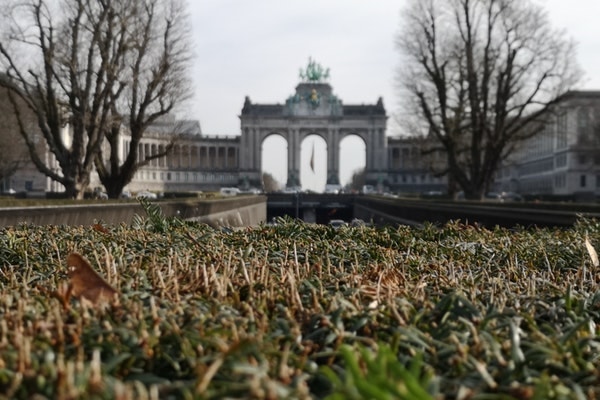
How old is Manneken Pis?
The statue represents a toddler, a boy a couple of years old. But the bronze statue itself is dated back to 1619, created by Hiëronymus Duquesnoy.
Why is Manneken Pis famous?
It’s a good question. I mean, it’s a statue of a peeing boy. I think it’s a combination of history, the statue is several centuries old, the story, everybody loves a funny story about children, and city marketing.
The city also loves to dress up Manneken Pis. So why is the statue dressed up? Well, the city has a designated person to dress up the statue. This happens when there are special festivities. And this tradition already started in the 17th century. You can also visit the Brussels museum about Manneken Pis to see the collection of clothing he wore throughout history.
You can find an online overview of the clothing on the museum website . Here you see over more than 1000 costumes that the little boy wore.
Manneken Pis for sale
If you like the story of Manneken Pis, there is nothing to fear. Because you can buy a replica of the statue, big or small and even keychains, in almost every shop around the Brussels Grand Place.
You can also find the image of the statue on pillows, or made out of chocolate, on postcards and almost everything you can think of. The city of Brussels did her best to exploit their smallest but most famous citizen.
Manneken Pis museum
Close to the Grand Place, you can find the Manneken Pis museum.
As I already mentioned, you can find here the garderobe throughout history of the statue. It’s a small museum but fun to pay it a short visit, if you are interested in the fountain and statue though.
You can find more info about the museum via this link: Manneken Pis Museum Brussels
Let me know what you thought of the fountain and statue if you ever pay him a visit! Because if you would ever visit Belgium, the capital of Brussels is a must see, and in Brussels you should walk a bit further to see it’s most famous citizen. Have fun!
Sources and further reading: Wikipedia City of Brussels Pictures p exels.com
Others also read:
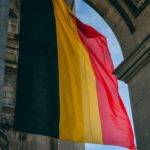
- History Blog
- Celebrity birthdays
Follow me on social media:

Cookie popup
Privacy overview.
Manneken-Pis, Brussels’ most famous son
09 March 2022
Do you dream of knowing everything there is to know about the Manneken-Pis, the wonderful sculpture of a little boy that became the symbol of Brussels? Finally, all the secrets of the city's most famous son will be revealed!
Located in the heart of Brussels, this monument personifies the sense of humour of the people of Brussels. As you walk through the streets of the centre of the city, you will come across this character who, in reality, must be one of the most photographed fountains in the world!
While most just stop by to say hello, there is actually a lot more to learn about the incredible adventures of this young man from Brussels. Discover the hardships he has faced, his other bronze friends and his penchant for fashion. But first of all, do you know why this child was made a hero? There are many legends about the origin of the Manneken-Pis , but the most common one tells the story of a young child who lived near rue de l'Etuve.
The legend of Manneken-Pis
Legend has it that Brussels had been resisting a siege for several days. The invaders, unable to penetrate the city walls, decided to set fire to them.
Enter our little hero, who had the unfortunate habit of getting up in the night to answer the call of nature. He came out of his house and saw the glow of the fuse that had been lit by the invaders who were trying to set fire to the city. With no water nearby, he had no choice but to urinate on it to extinguish it and save the city from the flames!
This charming anecdote quickly spread through the city's neighbourhoods and, in his honour, the bourgeoisie erected a statuette recounting his heroic gesture.
The stories are enchanting, but time now for some proven historical facts. Other statues have been named Manneken-Pis before, but it was indeed Jerome Duquesnoy who, in 1619, made the real bronze statue in the style of Cupid that everyone knows today. The statue itself recently celebrated its 400th anniversary! To admire the original sculpture, you'll have to visit the Museum of the City of Brussels , which is housed in the Maison du Roi. This splendid building on the iconic Grand-Place is where this child, who became the most famous boy in Belgium, has now taken up residence. He has become an unmissable attraction thanks to his adorable and sometimes hilarious outfits!
An extensive wardrobe
Manneken-Pis can consider himself very lucky. He is probably the child with the biggest wardrobe in the world!
According to legend, his passion for clothes began in 1615. In a painting by Denis van Alsloot, Manneken-Pis was depicted for the first time during the Ommegang, dressed as a shepherd. Soon less austere robes followed, notable examples being a costume donated in 1698 by Duke Maximilian Emanuel in Bavaria and a knight's costume donated by the king of France in 1747, which has been preserved and can still be admired today. In the years that followed, the dressing up of Manneken-Pis became a popular tradition.
Today, Nicolas, his personal dresser, can choose from among the 1,000 pieces that make up his collection currently on display at the Garderobe Manneken-Pis on rue du Chêne.
Good to know: You can visit Manneken-Pis' wardrobe with your ticket for the City of Brussels Museum.
400 years of trials and tribulations
Manneken-Pis has lived through many eras and had plenty of adventures. Like many works exhibited in the open air, he is faced with several issues and problems of degradation. The statue has been stolen or damaged several times.
Abducted several times, the first by soldiers, the second by a convicted criminal, this young boy was fortunately found, but in a pitiful state. Over the years he has also been amputated and vandalised, but it takes more than that to defeat our tough little hero!
All these misadventures nevertheless led those responsible for his safety to make a painful decision. For his own good, the bronze statue was sent to the Maison du Roi. Since then, a reproduction has been proudly enthroned in his place at the fountain. If you want to immortalise Manneken-Pis, the real Manneken-Pis, you need to visit the City of Brussels Museum!
Manneken-Pis’ bronze friends
Manneken-Pis also has other little friends who look like him and emulate his lack of modesty! His sister, Jeanneke-Pis is also immortalised in bronze and decorates another fountain in the centre of Brussels. Commissioned by Denis-Adrien Debouvrie to re-establish "equality between men and women", it was officially presented to the public in 1987. At 50 cm tall, this smiling little girl can be found at Impasse de la Fidélité and is another of Brussels' unmissable curiosities!
After getting a little sister, Manneken-Pis then decided he needed a pet! Tom Frantzen created him a faithful four-legged bronze companion, who replicates his young master's bad manners. “Het Zinneke” (more commonly known as Zinneke-Pis), has been wandering the streets of the capital since 1999 and brings a smile to the face of every passer-by who has the good fortune to come across this cute little puppy.
A little anecdote : In 2015, while on one of his regular wanderings, he was hit by a car, owing to his small size and slight lack of attention. He was soon restored to his position on the pavement of the rue des Chartreux with a new look, after just a short period of convalescence. Just like his human counterparts, he is a unique attraction that is well worth the visit during your time in Brussels.

Découvrez aussi
Brussels, the capital of chocolate.
Do you like chocolate? Then you're in luck, Brussels is the capital of chocolate! Discover what it has in store for you and learn all about this delicacy.

Must-see attractions in Brussels
You’ve just arrived in Brussels and you don't know where to start? Don't worry, we've put together a list of must-see attractions for you.
Brussels’ breweries
Over the last ten years, Brussels has seen a renewed interest in artisanal production and craft beers.

- Top Attractions
Monuments and Tourist attractions
Here are some of the unmissable sights Brussels has to offer: classified by type and ordered according to our criteria
Three attractions which define Brussels
Grand place of brussels, manneken pis, atomium in brussels, three unmissable palaces, palais de justice, brussels, royal palace of brussels, cinquantenaire in brussels, religious monuments, brussels cathedral, basilica of the sacred heart, eglise notre dame du sablon, parks and gardens, parc de bruxelles, other things to see in brussels, galeries royales saint-hubert, mini europe, european district in brussels, jeanneke pis, coudenberg, former palace of brussels, how do i save money on tourist attractions.
To save on these and a variety of other trips in the Belgian capital, discover the Brussels Card:
Brussels Card
You may also be interested in
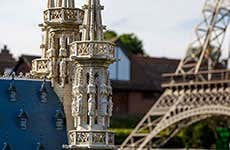
With over 350 models at a 1:25 scale, Mini Europe is a way to see the main monuments of 80 European cities in barely two hours.

Grand Place
La Grand Place is the most famous and most photographed place in Brussels. With tens of famous buildings, architecturally speaking it's one of the most beautiful squares in Europe.
THE 10 BEST Belgium Monuments & Statues
Monuments & statues in belgium.
- Churches & Cathedrals
- Points of Interest & Landmarks
- Monuments & Statues
- Historic Sites
- 5.0 of 5 bubbles
- 4.0 of 5 bubbles & up
- 3.0 of 5 bubbles & up
- 2.0 of 5 bubbles & up
- Budget-friendly
- Good for Kids
- Good for Big Groups
- Good for a Rainy Day
- Good for Couples
- Hidden Gems
- Adventurous
- Honeymoon spot
- Good for Adrenaline Seekers
- Things to do ranked using Tripadvisor data including reviews, ratings, photos, and popularity.
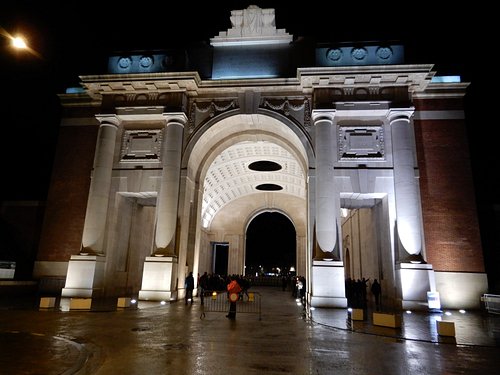
1. Last Post ceremony

2. Menin Gate Memorial

3. Manneken Pis

4. Mardasson Memorial
5. Middelheim Museum

6. Jeanneke Pis

7. Brabo's Monument
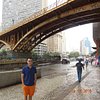
8. Adolphe Sax Statue

9. Saint Julien Memorial
10. Monument à Éverard t'Serclaes

11. Nello & Patrasche Statue

12. Westfront Nieuwpoort

13. Gentpoort
14. Malmedy Massacre Memorial

15. Pieter Appelmans Monument
16. Carillon du Mont des Arts

17. Square and Statue of Simon Stevin

18. Fort Napoleon

19. Albert Einstein Statue
20. The Four Horsemen of the Apocalypse

21. Standbeeld Ambiorix
22. Manneken Pis
23. Smurf Statue

24. Bayernwald
25. Peter Paul Rubens Statue

26. McAuliffe Square

27. The Ploegsteert Memorial

28. Jan Breydel and Pieter de Coninck Monument

29. Colonne du Congres

30. KOERS. Museum van de Wielersport

What travelers are saying
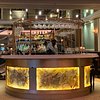
25 Famous Landmarks in Belgium
Located in the heart of Europe, Belgium is covered with amazing destinations and attractions. Brussels is the capital, the biggest city, but also where you’ll find a huge number of Belgian Landmarks. Yet, cities like Brugges, Ghent, and Mechelen have lovely historical centers with some major landmarks. And then, there’s Leuven with its unbelievable city hall! Here, we will cover these and other famous landmarks in Belgium !
Planning a trip to Belgium? Have a look at the 50 things you need to know before traveling to Belgium!
We have invited some of our fellow bloggers to pitch in and get you the most complete and informative list of Landmarks in Belgium .
Page Contents
Famous Belgium Landmarks – Brussels
#1 grand place.
La Grand Place, or De Grote Markt is the central square of Brussels, where people gather to celebrate or simply to meet each other. Considered by many one of the most beautiful squares in Europe, it’s one of the most remarkable landmarks in Brussels. Consequently, it’s always bustling with life, crowded with tourists and locals alike.
With roughly 110 by 68 meters, the Grand Place is surrounded by luxuriant guild halls and two larger edifices, Town Hall and the King’s House (today contains the Brussels City Museum). UNESCO recognized its importance in 1998 when it declared it a World Heritage site.
Obviously free to explore, the Grand Place is more than a mandatory destination in Belgium , it’s where you should start your trip. You’ll be able to explore some of the most imposing buildings in Brussels and then take a break while eating a famous waffle, chocolate, or drinking a Belgian Beer.

#2 Manneken Pis
Only a 5-minute walk from the Grand Place, the Manneken Pis is located on the corner of Rue de l’Etuve and Rue du Chêne. Yet, if it wasn’t for the crowds surrounding it, you could easily miss it.
Manneken Pis literally translates into “little boy peeing,” and that’s exactly what it is – a bronze statue of a naked little boy peeing into the fountain’s basin. The Belgians simply adore this statue, it’s almost a national symbol as it represents their sense of humor and independent thinking. They even dress it with a variety of clothes, from Halloween costumes to pop culture and historical references.
The Manneken Pis is a weirdly bizarre landmark in Belgium and the world, which is why it became so famous. Though you should know that the statue is very small, so you won’t get disappointed when you get there.
The original statue dated back to the 17th century and was designed by Jérôme Duquesnoy the Elder. The statue seen on the street is a replica of the 1960s, while the original is in the Brussels city museum.

Located on the Heysel Plateau in Brussels, the Atomium was built for the 1958 Brussels World Fair. This Belgian Landmark stands 102 meters tall and has nine balls 18 meters in diameter. As a whole, it forms the shape of a unit cell of an α-iron (ferrite) crystal magnified 165 billion times. So, it’s fair to say that’s a unique building and clearly one of the most famous landmarks in Belgium .
Curiously, and similarly to the Eifel Tower, the Atomium was supposed to be temporary, but it quickly became part of the city’s landscape. Its popularity made the city’s authorities decide to keep it, and in 2004-2006 it was fully renovated.
Today it works as a museum, and on top, there’s a restaurant with panoramic views of Brussels. This is an attraction that’s worth mainly from the outside and its unique shape, the interior can be a little disappointing. There’s nothing very attractive in the interior.

#4 EU Parliament
By Džangir Kolar from Dr Jam travels
European Union has a parliament in two locations, and one of them is in Brussels (the other is Strasbourg). So when you are in the city, don’t miss a chance to visit this temple of European democracy. The entrance to the parliament is close to Station Europe at Place du Luxembourg. You can arrive at the EU Quarter – Espace Léopold by bus 12, 95 or metro 1, 2, 5, 6, 7, taxi (basic fee is €2.40, the kilometer price is €1.80) or intercity train.
Tours to the buildings complex built from 1989 to 2004 can be started with a visit to the Parlamentarium, a permanent exhibition containing hundreds of multimedia components explaining the EU institutions in the 24 official languages of the EU. But the highlight of the visit is the European Parliament Hemicycle, a semicircular-shaped debating chamber plenary chamber with more than 700 seats.
From the balcony, you can even listen to their session for an hour. Visits are free of charge, but booking is required for groups and individual visitors. There is also a smartphone app where you can find info and multimedia about this place. After the visit, you will understand the importance of this parliament, where decisions made shape the lives of almost half a billion people.

#5 Halle Gate
By Dymphe from Dymabroad
One of the best landmarks of Belgium is the Halle Gate in Brussels. It is located very close to Bruxelles-Midi railway station and you can easily walk there. Also, there is a metro station next to it called Porte de Hal/Hallepoort. Moreover, it is close to the Palace of Justice, so you can combine visiting the two. The Halle Gate was created in the 14th century and is an old city gate that was part of one of the old city walls of Brussels. The other city gates and city walls of Brussels were removed, but the Halle Gate was kept to serve as a military prison.
Throughout the years, it was also used for several other purposes, such as a church. Nowadays, you can visit a museum inside of the Halle Gate. This museum is about the building itself, the city of Brussels, and the defense of the city. The Halle Gate is not a UNESCO World Heritage Site. However, it is a very interesting place that you should definitely visit! Also, because it is very interesting and very centrally located, it fits well if you would only go to Brussels for one day .

#6 Royal Palace of Brussels
By Mayuri from ToSomePlaceNew
The Royal Palace of Brussels is the Belgian Monarchy’s administrative residence. It is the official worksite, from where the monarch works daily alongside the staff members. Belgium is a constitutional monarchy with a hereditary head of state, titled King or Queen of the Belgians.
The Royal Palace is located on Rue Brederode 16, in Bruxelles, Belgium. It is just a short walk from the Brussels Tourism Office and the popular Grand Place.
The construction of the palace took decades to be built, more than a century in fact. Construction began in 1783, and the palace was only completed and opened in 1934. The palace was designed in beautiful neoclassical architecture, and it has four official architects contributing to the work – Alphonse Balat, Tilman-François Suys, Henri Maquet, and Ghislain-Joseph Henry.
Although not a UNESCO World Heritage Site, the Royal Palace’s architecture and its close proximity to the Grand Place makes it a wise addition to your itinerary, even if you have just one day in Brussels .
At the Brussels palace, the King receives the representatives of heads of state, ambassadors, and other guests, so it is not open all year round. During the summer months, visitors are allowed to explore the palace’s interiors. At other times of the year, tourists can only explore the palace’s exteriors.
The Royal Palace of Brussels is not used as a royal residence, as the monarchy lives in the Royal Palace of Laeken on the outskirts of Brussels. This palace is solely used as a work/administrative building.

#7 The Galeries Royales Saint-Hubert
By Chloe from Chloe’s Travelogue
The Galeries Royales Saint-Hubert (“ Royal Galleries of Saint Hubert ” in English) is a historical shopping center you must include in your Brussels itinerary .
While the upscale shopping center is only 200 meters long and relatively small by today’s standards, it has made it to UNESCO’s Tentative List in the cultural heritage category for its architectural beauty and historical value.
The luxurious passage arcade was designed and built by architect Jean-Pierre Cluysenaer in 1847. It is one of the first shopping malls in Europe. In fact, its charming architecture with twin facades and an arched glass roof has inspired the Galleria Vittorio Emanuele II in Milan and other 19th-century shopping arcades.
Today, the Royal Galleries houses high-end specialty boutiques, restaurants, and two theaters. If you have an eye on Belgian pralines, it is also a fantastic place to go self-guided Belgian chocolate tasting. The four most notable artisan chocolatiers are right here in one place, which calls for sampling to see which one of the famous names you like the best.
No matter how many days you are in Brussels or your interests, there is no excuse not to swing by the Royal Galleries, conveniently located in the city center. Get inspired by its gorgeous architecture, savor the world’s best pralines, and shop for some souvenirs! It surely is a destination worthy of your visit.
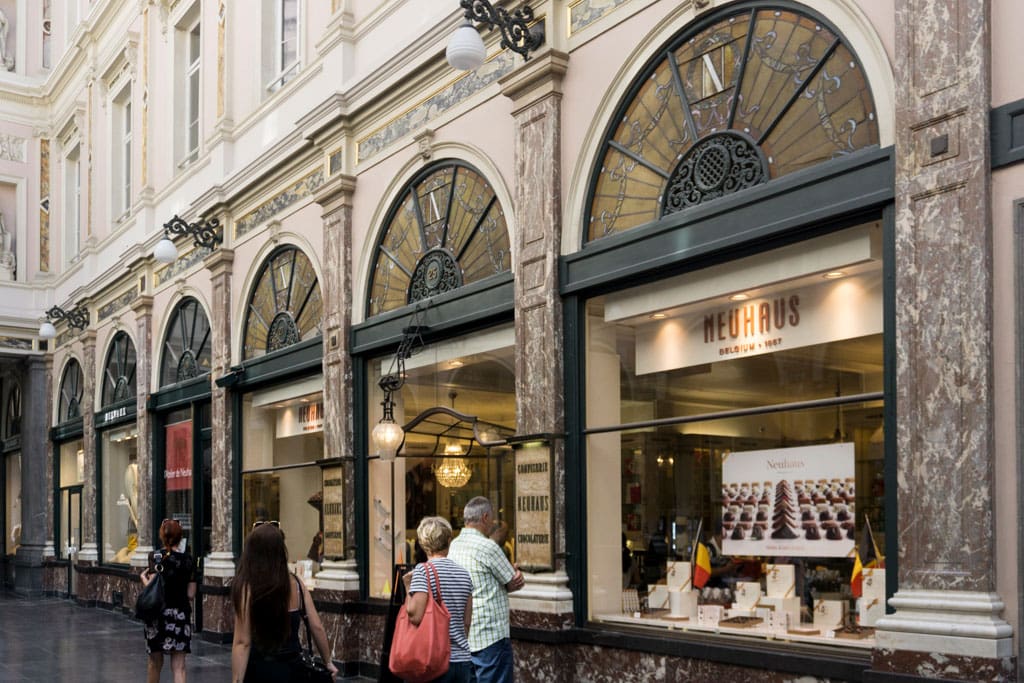
#8 The Cinquantenaire Arcade
The Cinquatenaire Arcade is a triple triumphal arch in the Parc du Cinquantanaire in Brussels. The arc was built by King Leopold II on the 50th anniversary of Belgian independence. Although it was supposed to be built in 1880 at the National Exhibition, it was only concluded in 1905 on its 75th anniversary.
The monumental arcade is impressively big at 45 mt high. On top of the arcade, you will find a statue of four houses with a woman charioteer Raising the National Flag and several sculptures below personification of the Belgian provinces. Beside the Cinquatenaire Arcade are the Military Museum, the Art and History Museums, and the Autoworld pavilion.
Besides the arcade, the Parc du Cinquantanair, or Jubelpark, is a pleasant place to visit and relax. With picturesque gardens, ponds, and waterfalls, it is the ideal spot to walk, so a picnic or run. In Summer, it even hosts a drive-in cinema. On the north-western corner of the park, you can even find a beautiful Great Mosque of Belgium.
The Cinquatenaire Arcade and the park is easily reachable by metro (Schuman stop) or within walking distance from the Royal Palace of Brussels.

Famous Landmarks in Belgium – Flanders
#9 tyne cot cemetery.
By Emma Caldwell from Emma Jane Explores
Located in the Ypres Salient around the infamous Flanders Fields of World War 1, the remarkable Tyne Cot Commonwealth War Graves Cemetery and Memorial is a must-visit in Belgium to truly grasp the enormity of the sorrows of the Great War. It is, in fact, the largest cemetery housing the bodies of Commonwealth soldiers in the world.
The cemetery features rows and rows of white headstones marking the remains of soldiers who fought and died in battle– many without names. Horrifyingly, around 70% of the burials at Tyne Cot are unnamed, hence the large stone walls around the cemetery become a memorial to the missing with names of missing soldiers inscribed.
The biggest nearby town to Tyne Cot Cemetery is Ypres and it is possible to get a bus from there to the cemetery, which will take around half an hour. Alternatively, Tyne Cot can be accessed on a day trip from Bruges either using public transport or via a small group tour – the Flanders Fields Battlefield Daytours is highly recommended and visits several other significant sites from the war. Whilst not a UNESCO World Heritage site like many other places in Belgium, the solemn significance of this part of the country and the sacrifices made by so many during the war years in Flanders makes the Tyne Cot Cemetery an integral part of any history-lovers visit to Belgium.

#10 Menin Gate
By Ella Moore from Many More Maps
In the historical town of Ypres, you’ll find the Menin Gate , a huge First World War memorial to the missing soldiers of Britain and the Commonwealth. Etched into the stone walls of the Menin Gate, you’ll find the names of over 54,000 missing soldiers.
The Menin Gate is one of the biggest tourist attractions in the city and one of the most iconic landmarks of Belgium. The Commonwealth War Graves Commission chose Ypres as the site to erect the memorial in remembrance of the sheer amount of fighting that took place there. There were five Battles of Ypres during the First World War!
Although the Menin Gate is worth visiting at any time of day, night is the best time to visit. This is because, at 8 pm every evening, buglers from the town play “The Last Post,” a bugle call that used to be played in the British Army to mark the end of the day. This is followed by a series of speeches and sometimes songs to pay respects to the missing soldiers. The Last Post Ceremony at the Menin Gate happens every night, even on Christmas Day, and is hugely popular with visitors to the city.

#11 Basilica of the Holy Blood in Bruges
By Trijit Mallick from BudgetTravelBuff
Belgium is not all about gorgeous architectural buildings, popular Belgian chocolates , or other famous things , but also about religious places and beautiful churches. The Basilica of the Holy Blood is a 12th-century chapel in the corner of Burg square.
This Roman Catholic basilica consists of two-level of chapels on top of each other: a Romanesque lower chapel and a Gothic upper chapel. The Basilica of the Holy Blood is just 1 km from the Brugge station. You can take the Line 12 bus or a taxi (takes around 7 minutes) to reach the basilica.
It is a very quaint and sacred church and one of the busiest tourist attractions in Bruges. You can see the colorful wall paintings and stained glass windows while going upstairs to the basilica. There is a holy relic that contains a cloth with the blood of Jesus Christ inside a glass case. Each person gets a few seconds to view the sacred cloth.
There is a myth that after the Crucifixion, Joseph of Arimathea wiped the blood with a cloth from Christ’s body and preserved the holy cloth. Whether you are a believer or non-believer, you will surely appreciate the beauty of this religious site.
There is no entrance fee, however, you can give donations to help maintain the chapel. Make sure to dress modestly while visiting this religious site in Bruges.

#12 Belfry of Bruges
By Dave Chant from Dave Chant
Bruges is often described as a “chocolate box” town, popular with tourists since the late 20 th century – it is also the 7 th most populated city in Belgium. Probably the most famous symbol of Bruges is its Belfry, which sat in the central Markt square of the old town. In fact, you can see the Belfry from almost everywhere in Bruges, and from the top of the Belfry, you can see almost all of Bruges. This alone makes it a fascinating building to visit.
It’s a Medieval tower built in the 13 th century with an impressive carillon housing 47 bells. Belfries were important buildings to store city documents and to use as watchtowers. They even have different bell sounds for different uses – to signal the start of the day, danger, and so on.
Sadly the history of the Belfry has not been without tragedy. It was destroyed by fire in 1280 and rebuilt. The upper stage was added in 1483, but a lightning strike in 1493 reduced the spire to ashes. Again, in 1741, the rebuilt spire went up in flames and has never been replaced; this means the building is lower than originally built.
There are still 366 steps to the top and though 83m high does not seem like much, you’ll have views across the town. The Belfry and the old part of the city are so beautiful that they have been UNESCO listed since 2000.

#13 Beguin Houses of Bruges
By Jane and Duncan from To Travel Too
What is a Beguin House? Wikipedia states, “A beguinage, from the French term béguinage , is an architectural complex which was created to house beguines : lay religious women who lived in community without taking vows or retiring from the world.”
In Bruges , the Beguin Houses are located at Begijnof 30. This UNESCO World Heritage site is one of the popular attractions in Bruges. The entrance to the Beguin Houses is via a small bridge and a gatehouse that dates back to 1776.
You can visit on your own, or it is included in a walking tour of Bruges. The 16 – 18th century white Beguin Houses are enclosed in a walled neighborhood. They are now home to the Monastery of the Vineyard, run by the Benedictine Sisters.
The 17 th Century Begijnof Church is dedicated to St Elizabeth of Hungary. The Benedictine Sisters conduct daily services in the Church. The Museum is located in one of the 17th-century houses and houses items from the Beguines.
Entrance Fees: Free to visit the houses and the Church, Museum two Euros per person.
Best time to visit: Springtime when the grounds are covered in bright yellow daffodils

#14 Antwerp Central Railway Station
By Chrisoula Manika from Travel Passionate
Situated in the city’s heart, Antwerp Central Railway Station is also called Middenstratie (Middle Station) and Spoorwegkathedral – the Railway Cathedral. It is an absolutely stunning railway station, one of the most beautiful in the world. If you find yourself in Antwerp, allow time to stop, look up, and marvel at its engineering.
The railway station was built over ten years between 1895-1905 and featured a stone railway building with a 75-meter high glass dome above the waiting room. There is a vast train shed in glass and steel, measuring 285 meters long and 44 meters high. King Leopold II commissioned the station as he felt that the city should have a prestigious railway station.
He chose the local architect, Louis de la Censerie, for the work. The architecture is certainly fascinating as it features 20 different types of marble, Doric, Tuscan, Ionic, and Corinthian-styled columns, and a huge monumental clock in the main hall.
Between 2000- 2009, the station was completely modernized and expanded to accommodate high-speed trains from Paris and Amsterdam.

#15 St Rumbold’s Cathedral in Mechelen
By Nichola from Family Hotel Expert
St. Rumbold’s Cathedral is one of the great sites in the picturesque city of Mechelen. Completed in 1520 and taking more than 300 years to build, it is an imposing structure that can be seen across most of the city. This UNESCO World Heritage site has a quirky shape on account of the original plans containing a further tower that was never built.
Today you can climb the 538 steps to the top, right into the bell tower for spectacular views across the city. On clear days you can even see as far as Brussels and Antwerp. The tower is the site of one of Mechelen’s most legendary moments when, in 1687, a man emerged from one of the city’s bars and, seeing the moon shine on the tower, believed it to be on fire. Raising the alarm, a chain of townsfolk passed buckets of water along the line until, reaching the tower, it was clear there was no fire. The town has been known for its De Maneblussers, or The moon extinguishers, ever since! If you’re enjoying family holidays in Belgium then don’t miss Mechelen and the chance to climb its wonderful St. Rumbold’s Cathedral tower.

#16 Leuven town hall
The Leuven town hall is possibly the most elegant landmark in Belgium. Luckily, a day trip to Leuven is easy and relaxing, allowing you to see this stunning Belgian landmark and the rest of the city.
The Town Hall is truly an unforgettable building with ornate architecture, crafted in lace-like detail. Constructed between 1448 and 1469 on a Brabantine late gothic, the Leuven town hall is a wonder to look at, covered with 236 statues in canopied niches, and the corbels supporting the statues are carved with Biblical scenes in high relief. The details are astonishing up close, and from afar, we can appreciate how magnificent it is as a whole, with the four corner turrets, two ridge turrets, and a balustrade around the building.
Besides the spectacular architectural design, the town hall has beautiful interiors and cellars as well as a huge number of statues and paintings to explore over the three floors. There are also daily tours to the rest of the building, where the guide will explain to you the details of the construction history of this Gothic gem. For example, the statues representing biblical figures, scholars, eminent citizens, artists, judges, dukes of Brabant, and even Napoleon that ornate the exterior weren’t part of the building until the 19th century.

#17 Gravensteen (Castle of the Counts)
By Sarah Vanheel from CosmopoliClan
In the heart of Ghent, the enchanting city between Brussels and Bruges is a fortress that dates back to the 9th century. Its strategic location by the Lys River made the (then wooden) structure an excellent base to defend the city against the Vikings.
Over the next centuries, the counts of Flanders commissioned countless rebuildings. It wasn’t until the 12th century that Count Philip of Alsace, in an attempt to outdo the then-thriving city’s merchants that flashed their wealth, had it transformed into an impressive stone fortress.
After Philip of Alsace moved on, the Castle of the Counts (Gravensteen in Flemish) was repurposed into a supreme court and later even an industrial complex. It has stayed surprisingly intact, and, to this day, it counts as one of Ghent’s most important attractions .
Pick up an audio guide at the entrance and listen to the comedy tour as you marvel at the thick walls, stone ramparts, tower stairs, and battlements of this famous Belgian landmark.
Several collections are on display, such as weapons, armor, and torture equipment (which has recently been moved to the dungeon). Head to the top of the fortress and take in the most amazing city views.
You can find the Castle of the Counts between the stately Veerleplein and the Patershol district’s cobblestone streets. It is perfectly located for a day trip from Brussels to Ghent.

#18 Belfry of Ghent
By Cecilie Mortensen from Worldwide Walkers
The Belfry of Ghent, also known as the Belfort Van Gent, is a beautiful UNESCO World Heritage Site and one of Belgium’s famous landmarks.
This magnificent bell tower dates back to the Middle Ages. The construction began in 1313 and finished in 1380. With its 91 meters height, it still remains the tallest Belfry in all of Belgium today.
The Belfry of Ghent served many important roles during the years. It kept important records from town, served as a watchtower over the city, and the bells were used as warning signals for the city. There is so much history hidden within this belfry, which you can luckily relive today if you spend one day in Ghent .
For just €8, you can experience the Belfry of Ghent. First, you get to see the old dragon within the tower and learn about Ghent’s history, then you take the elevator to the top of the Belfry and get amazing 360 views over the city before you end the trip by the impressive Bell Roeland that weighs 6200 kilos.
It’s easy to get to the Belfry of Ghent. From Gent-Sint-Pieters Station, you take tramline 1 into Korenmarkt, from where it’s within walking distance. It’s such an incredible landmark, so make sure you include the remarkable Belfry of Ghent on your next trip to Belgium.

#19 St. Bavo’s Cathedral in Ghent
By Ellie from Ellie’s Travel Tips
Also located in the heart of Ghent, St Bavo’s Cathedral is an impressive, 89-meter-tall Gothic cathedral home to historical works from famous painters. The city tram is a quick and easy way into the city center – home to the massive cathedral.
The landmark’s construction began in the mid-10th century. However, a magical transformation took place when architects ditched the traditional Roman design for a diverse mixture of Romanesque, Gothic, and Baroque styles.
St Bavo’s most notable showpiece is The Adoration of the Mystic Lamb—a 24-panel altarpiece completed in 1432 by Jan van Eyck. This masterpiece survived the 1566 iconoclast revolt only to have its center panels swept away to Paris 30 years later.
After returning in 1615, the side panels were sold to the King of Prussia. Despite the work’s questionable past, most of the famous panels have remained peacefully in St Bavo’s Cathedral for more than 50 years.
The cathedral’s crypt offers traces of the original Roman structure and centuries-old books, chalices, scrolls, and other captivating historical artifacts. The dramatic, high-rise ceiling and arches of St. Bavo’s are stunning. Intricate stained-glass windows combine the magnificent Gothic look as they line the church walls.

Landmarks Belgium – Wallonia
#20 lion’s mound.
The Lion’s Mound marks one of the most famous battles in the history of mankind – the Waterloo battle , where Napoleon was definitively defeated. This large conical hill isn’t natural, it was built with earth taken from the battlefield. On the hill’s top is a huge lion statue of 4.5 by 4.25 meters.
This landmark was designed by Charles Straeten at the behest of William I of the Netherlands. It was conceived as a symbol of the Allied victory and it purportedly doesn’t glorify any individual. It is possible to climb the 226 steps to the top of the mound and enjoy the views of the battlefield and surrounding areas.

#21 Villers Abbey
By Laura Meyers from Laure Wanders
The ruins of the Villers Abbey are located in Villers-la-Ville, a town 40 kilometers from Belgium’s capital, Brussels. The abbey was founded in 1146 and would become one of the most significant Cistercian abbeys in Europe during the centuries that would follow. Many monks lived here, and its territory drastically expanded. However, the abbey started to decline, and when it was pillaged in 1796, it was finally abandoned.
Today, only the ruins of the abbey remain. You can still see its church, kitchen, dining hall, prison, and some more impressive locations. It’s a very beautiful place to walk around and imagine what life was like during the abbey’s golden age. There’s also a small museum that you can visit and if you visit the abbey during the spring or summer months, you’ll be rewarded with magnificent flowers in the abbey’s gardens. On top of that, as there are picnic tables available, these gardens are a perfect place for a picnic!
The easiest way to get to Villers Abbey is by car. It’s also possible to take the train to the Villers-La-Ville train station and then walk to the abbey (2 kilometers).

#22 Montagne de Bueren
Located in the center of Liege, this staircase is one of the most famous landmarks in Belgium and is usually considered one of the world’s most impressive staircases. With 374 stairs, it connects the permitted direct link between the city center barracks at the citadel.
Built in the 19th century to honor the 600 soldiers who died defending Liège from an attack by the Duke of Burgundy in the 15th century. It was named after Vincent de Bueren, the man who lead the defense of the Liège at the time. It’s completely free to enter, and always open to the public.
Montagne de Bueren is a characteristic artwork of the 19th century, constructed with bricks, and sandstone blocks. From the top, we get some marvelous views and from below it just looks magnificent. We strongly suggest you climb it – it’s exhausting but there’s a very nice sense of achievement when reaching the top.

#23 Spa-Francorchamps
By Lanch Gauld from The Silver Nomad
When you hear the word “Spa”, most people think of relaxing in beautiful, calm surroundings, but a trip to Spa-Francorchamps is a totally different vibe!
Located in Stavelot in Belgium, the 7km long track has been thrilling drivers and fans since the first Grand Prix race was held there in 1925. One of the favorites of many drivers, the Spa circuit and unpredictable weather test the drivers’ skills.
The challenging and undulating track winds through the forest with sweeping bends, long straights, a tight hairpin at La Source, and the famous Eau Rouge, which takes you straight up the hill to Raidillon.
For a high-octane adventure, visit Spa-Francorchamps on a Formula 1 Belgian Grand Prix™ day, or one of the other exciting races including the exciting endurance races, the Spa Classic, and the Total 24 Hours of Spa.
For amateur drivers, there is the opportunity to take your own car around the track on the Public Driving Experience days and feel for yourself the exhilaration of driving around the legendary track.
Or go out with a professional for an individual introduction to the track, where you not only get taken around the track but get the chance to drive it yourself.

#24 Ardennes American Cemetery
By Tom Bartel from Travel Past 50
One of 14 cemeteries for American World War II dead on foreign soil, the Ardennes American Cemetery near Liege, Belgium is a 90-acre (37 hectares) cemetery and memorial. The cemetery contains the graves of 5,329 U.S. service members. Many of these died during Nazi Germany’s final major offensive in the west, the Battle of the Bulge, while others died in the American Army’s advance to the Rhine and across Germany. Three-fifths of those buried in this cemetery were airmen.
This cemetery is unique among all American cemeteries as it served as the central identification point for the entire European Theater of Operations from the last days of the war until 1960. Because of that role, the Ardennes Cemetery is unique in providing a burial ground for casualties of every major WWII battle, including some from the Pacific Theater. In all, there are 5,311 headstones. 792 of those mark the graves of servicemen who could not be identified, and 462 stones are memorials to men who were missing in action. The headstones are arranged in the shape of a cross.
The entrance to the site is marked by a large marble memorial building that includes maps and lists of the units who fought in Europe.
The cemetery is administered by the American Battle Monuments Commission, and the staff will gladly help locate specific graves.

#25 The Citadel in Namur
By Joanna from The world in my pocket
The Citadel in Namur is one of the most beautiful in Belgium and can take an entire day to visit. It is one of the largest citadels in Europe and the oldest permanent settlement in the Benelux. Located on a hill at the confluence of the Meuse and Sambre rivers. The citadel has 7 kilometers of underground tunnels, some of which can be visited in a tour included in the entry ticket. Visiting the citadel is one of the best things to do in Namur to learn about the history of the city.
The easiest way to see the entire citadel and its grounds are by mini-train, which also includes an audio guide. With over 1000 years of history and different occupations, the citadel has a lot of stories to tell.
The citadel of Namur is also the home of a famous golden sculpture created by the Belgian contemporary artist Jan Fabre, inspired by the symbolist artist Felicien Rops, who was born in Namur. The giant turtle with a man on it represents “Utopia” and overlooks the city from its prime spot inside the citadel.
The Citadel of Namur is easily accessible from the city center either by foot or by a special bus – for people who are not fit enough to walk uphill. A ticket to visit the citadel that includes the underground tunnels, the mini train, and the exhibition center costs £15.

* Cover photo by [email protected] via Depositphotos
Planning a trip to Belgium? Have a look at some other of our favorite Belgian articles:
- 50 things you need to know before traveling to Belgium
- What is Belgium famous for?
- 15 Day trips from Brussels;
Pin it for later

Sharing is caring!
latest in US News

JFK dispatchers charged in 'reprehensible' bribery scheme to let...

Cousin revealed as ringleader in shocking caught-on-video murder...

Hunter Biden's attorney blasts 'abnormal' prosecution after...

Trump hits Biden for ‘border bloodbath,' says prez allowed...

Albany strikes back, bar owner calls for ESPN ban after Hall of...

Tulsi Gabbard claims she rejected offer to be RFK Jr's VP:...

'Diddy' ex shares dramatic new footage of raid on his LA home,...

Why NYC might end up being a good place to see the solar eclipse
Seemingly drunk tourist climbs statue, causes $19k in damages at iconic brussels building day after it reopened to public.
Thanks for contacting us. We've received your submission.
An Irish tourist has broken a statue out the front of an iconic building in Brussels one day after it reopened to the public following a three-year $150 million restoration.
The man was allegedly intoxicated and was filmed trying to ride the lion statue, which also features a man with a torch, at the Brussels Stock Exchange in Belgium.
There are two of the statues located on either side of the entrance to the building and they were also restored as part of the project.
As the tourist tried to climb down, a part of the statue, believed to be the torch, broke off.

He was arrested by police at a nearby fast food restaurant and said he was unaware of the scale of the damage he had caused, according to local media.
The restoration of the statue is estimated to cost about $19,000 and the Brussels Stock Exchange plans to make the tourist pay, local newspaper Nieuwsblad reported.
Nel Vandevennet, project manager for the restoration, said the building and statues were heritage-listed.

“We would like to carry out the repairs quickly, but it will surely take a few weeks or even months,” he told news outlet VRT NWS .
He continued: “The whole building has only just been restored to its former glory, including the two lions which were in a bad way.
“We thought the sculptures would enjoy greater respect. We just think it’s very sad this happened.”

The building opened to the public on Saturday and the video of the tourist was filmed on Sunday night.
The reopened building plans to be a public place for exhibitions, performances, and other events.
There is a cafe and it is expected a restaurant will eventually be opened too.
It is also home to the Belgian Beer World museum, but it is unknown if the Irishman had visited.
Share this article:

Advertisement
7 historic places to visit in Belgium
Recently updated on July 31st, 2023 at 02:18 pm
There’s no shortage of captivating places to visit in Belgium. Contemplating a free day in Flanders perhaps, or hoping to hire a bicycle in Bruges? Take note of these beautiful – and historically significant – Belgium attractions.
The Grand Place – Brussels

Home to the European Union and the epicentre of international business, politics and policy, Brussels has the undeserved reputation of being somewhat boring and bureaucratic.
In fact, the opposite is true. Anything but stuffy, the city’s architecture, museums, cafés and jazz clubs draw visitors from across the world. And at the heart of it all, is De Grote Markt – Brussels’s central square.
Declared a UNESCO World Heritage Site in 1998, the square is dominated by the imposing Town Hall. Standing 96-metres tall and capped by a statue of Saint Michael slaying a demon, the Town Hall is flanked by centuries-old guildhalls and buildings. It is Belgium’s most photographed attraction.
We suggest visiting in August. Every second year, Belgian volunteers gather at the Grand Place to weave a ‘ flower carpet ‘ out of colourful begonias, dahlias, grass and bark. Alternatively, plan a visit in December when the square is transformed into one of Europe’s most popular Christmas markets.
GET INSPIRED ON: Best of Holland, Belgium and Luxembourg
Basilica of the Holy Blood – Bruges

Visitors to Bruges often get swept up in the romance of the town’s canals and bridges, medieval architecture, lace shops and chocolatiers. But one of the most historically significant places to visit in Belgium, is the Basilica of the Holy Blood.
The Basilica’s beautiful Romanesque and neo-Gothic architecture hides one of the world’s most sacred (and mysterious) relics. This is a vial said to contain a drop of holy blood from Jesus Christ, brought back to Belgium after the Second Crusade (1147–1150).
But, it’s the chapel’s ornate façade, stained glass windows and impressive murals that delight visitors and pilgrims alike. Learn more about the legend behind the relic, while soaking up the peaceful atmosphere of the Basilica itself.
RELATED CONTENT: 10 Beautiful European Cities That Will Blow Your Mind
Battlefield of Waterloo

History buffs will adore a visit to the battlefield of Waterloo. Located just 10 miles (16 kilometres) south of Brussels, visitors can walk the historic site before making their way up Lion’s Mound, where an enormous cast-iron lion keeps watch over the battlefield below.
Also worthwhile, is a visit to the Wellington Museum, where the Duke of Wellington spent a few nights before his famous victory over Napoleon Bonaparte on the 18 th of June 1815.
Gravensteen Castle – Ghent

The 11 th -century Gravensteen Castle is one of Europe’s oldest surviving examples of a moated fortress. Gravensteen’s impressive walls, complete with turrets and arrow slits, are the stuff of fantasy and legend.
Climb its staircase for sweeping views of the countryside below. Then, wander into town in search of gestreken mastellen (sweet, cinnamon pastries), cuberdons (cone-shaped Belgian candy), or frietjes (Belgium frites , usually served with mayonnaise).
If you’re lucky enough, you might find yourself in Ghent in July. If so, be sure to catch the Ghentse Feesten , a 10-day celebration of music, art and culture.
Rubenshuis – Antwerp
Visitors to Belgium’s second-largest city will discover a lively, creative hub filled with coffee bars, restaurants, boutiques, galleries and museums. The Grote Markt ‘s 16 th -century Stadhuis (Town Hall), lavishly decorated guild houses and Brabo Fountain, make for fantastic photographs. But it’s Antwerp’s Rubenshuis which makes this list of significant places to visit in Belgium.
For art lovers, a visit to Rubens House gives a rare glimpse into the life, work and art of Peter Paul Rubens (1577-1640), arguably one of the world’s greatest baroque artists.
Flanders Fields – Ypres

Flanders Fields, captured poignantly in the First World War poem, “In Flanders Fields”, refers to battlefields located between West Flanders and East Flanders in northern Belgium. Visitors can visit the In Flanders Fields Museum in Ypres to learn more about the battles fought on the Flanders front – and the 600,000 men who lost their lives there.
Another important landmark, the Menin Gate is a memorial to the thousands of soldiers who went missing in action during the First World War.
Perhaps one of the most haunting war memorials in the world, the stone walls of Menin Gate are engraved with the names of 55,000 allied soldiers lost on the battlefields. Make your way there at nightfall, where buglers have been playing the Last Post at 8pm every night since 1928.
Just south of Ypres lies the village of Ploegsteert, and the site of one of the most unlikely sporting events in history. Known as the ‘Christmas Truce of 1914’, an impromptu ceasefire broke out when exhausted troops from both sides celebrated Christmas by playing soccer, singing carols and exchanging alcohol, tobacco and food – across the frontline.
RELATED CONTENT : See first-hand the battlefields of WWI and WWII in Belgium on this special Trafalgar trip
The smallest city in the world – Durbuy

Move over Bruges, Durbuy’s cobbled streets, medieval square, timber frame houses and location on the banks of the Ourthe River, make it one of the most magical Belgium attractions. Durbuy enjoys its status as “the smallest city in the world”. Dating back to 1331, the town was elevated to the rank of city by the King of Bohemia.
Even though this no longer holds true, it’s still a fabulously fun reason to visit. Enjoy Durbuy’s local beer and wander around the topiary garden. Geology nerds should consider a trip to Durbuy’s famous limestone caves.
Other places to visit in Belgium

Chock-full of historical attractions, it’s almost impossible to create an exhaustive list of places to visit in Belgium. But if you’re planning a trip in the near future, make sure these Belgium attractions are on your itinerary:
- St. Peter’s Church – Leuven
- St. Bavo’s Cathedral – Ghent
- The Belfry Tower – Bruges
- Saint-Michel Cathedral – Brussels
- Graslei Canal – Ghent
How many Belgium attractions have you been fortunate enough to visit? Which ones are on your favourites list? Let us know in the comments below.
Want to hear more from us?
Sign up to receive inspiring travel articles, offers & news
" * " indicates required fields
Privacy Overview
Sign up for our emails.

30 Things Belgium is Known and Famous For
Planning a trip to Europe? Don’t leave Belgium off the list! Here are 30 things Belgium is known and famous for to convince you why it’s unmissable!
Belgium is famous for its food, beer, and divine chocolate. There are more castles per meter in Belgium than anywhere else in the world. Iconic landmarks like The Comic Strip Route pay homage to Belgium’s greatest claims to fame, such as Tintin and The Smurfs. Belgium is also known for its role in World War I and for being the site of the legendary Battle of Waterloo.

Let’s jump into the long list of what (else) Belgium is famous for!
Table of Contents
1. Belgium’s geography

First things first, let’s get down to the nitty-gritty. Understanding the geography of Belgium is key to understanding what you can expect of each region. It can get a little confusing, so here’s a quick breakdown.
The Kingdom of Belgium is the collective name for the country, although there are three recognized regions. These are Flanders (the northern half), Wallonia (the southern half), and Brussels Capital Territory in the center.
To complicate matters, there are three official languages in Belgium. Dutch (sometimes called Flemish), is spoken in Flanders. French is used in Wallonia, except the far eastern edge which is home to a small German population (they speak German). The capital is bilingual.
The country was divided this way as a compromise to minimize conflicts surrounding linguistics, economy, and cultural matters. Each region has its own regional flag and is run by federal, regional, and community governments. We’l l go into more detail as we go on, but that’s it in a nutshell!
2. Brussels

Brussels, the bubbling capital and center of Belgium, is famous for being an international hub of politics, having fabulous architecture, and a chocolate store on nearly every street. Yes, you read that last part right.
Sure, there are those weird peeing statues (more on them later) but there’s also the grand landmark arches of Parc du Cinquantenaire to feast your eyes on. The UNESCO World Heritage site of La Grand Place has 40 guild houses bedecked in gold and twinkling windows.
Brussels is often considered to be the capital of Europe, because of its many courts and international institutions located within the city. You can easily witness the city’s most fascinating major landmarks with this informative guided walking tour .
If you think Belgium is just for history nerds, there are also hundreds of bars up for grabs. It’d almost be rude not to sample Belgian beer in Brussels! The nightlife in Belgium’s capital is also buzzing, so be sure to head to some clubs while you’re there.

France has the Eiffel Tower, Belgium has the Atomium.
Belgium’s most popular modern symbol, the Atomium is a 102-meter-tall (335 feet) landmark that served as the centerpiece of the 1958 World Fair Expo in Brussels. The monument was built in the shape of an atom of an iron crystal magnified 165 billion times.
The name Atomium is a portmanteau of atom and aluminium , the material which was originally used to cover the spheres. This was changed to stainless steel when the Atomium was renovated in 2004.
An architectural and technical feat, the Atomium was intended to honor the metals industry and it represent faith in scientific progress. It particularly promoted the post-war ideal of the peaceful use of the atom.
Just like the Eiffel Tower, it was supposed to be a temporary monument but its popularity and success led the city authorities to just keep it. Today, it’s one of Brussel’s most popular tourist destination and the spheres contain permanent and temporary exhibitions, event venues for rent, and a panoramic restaurant. This Atomium entry ticket gives access to the exhibitions and the Design Museum Brussels.
4. Peeing sculptures

Belgium is famous for having a slight preoccupation with peeing. Before you get too worried, it’s not the citizens doing it! There are a few sculptures in Brussels that might catch your eye – and make you wish they hadn’t!
The two statues in Brussels of Jeanneke Pis (the urinating girl) and Manneken Pis (the urinating boy) have been voted among the most disappointing attractions in Europe. To that I say – what on Earth were you expecting? They truly are just statues of two children going for a number one. I think the phrase goes “when you’ve gotta go, you’ve gotta go” but the statues are there to stay.
There’s also the Zinneke Pis, the urinating dog who has lifted his leg against an otherwise typical bollard. This one, bizarrely, has four stars on Tripadvisor. You could almost mistake it for an actual dog, as it’s so inconspicuous.
5. Politics

As we mentioned earlier, Belgium is famous for being the political center of Europe, and Brussels takes center stage. Le Palais De Justice in Brussels is the world’s largest court at 26,000 square meters (28,000 square feet). But that’s not all – there are 40,000 employees working for the European Union in Brussels, and a further 4,000 working for NATO.
World politics aside, Belgian politics is also just as interesting and integral. Because Brussels is its own region within Belgium, it is used as a middle ground between Wallonia and Flanders to ease tensions between the regions.
Belgium also has the oldest compulsory voting system in the world. Men have been forced to vote since 1893 and women since 1948. If a Belgian citizen fails to vote four times in a row, they can lose their right to vote for ten years!
6. Longest period without a government

Speaking of politics, Belgium is famous for its record for the longest period without a government. You’re probably wondering how that works, so let me explain.
Belgium is a federal constitutional monarchy. Here, the decision-making powers are not centralized but divided between three levels of government: the federal government, three regional governments (Flanders or the Flemish region, Brussels Capital, and Wallonia), and three language-based communities (Flemish, French, and German).
These federated regions and communities have their own governments but the Flemish region and community have a single Flemish government. As such, Belgium has one federal government and five regional and community governments.
Under this system, the Prime Minister and his cabinet are drawn from political parties from the Chamber of Representatives (lower house). These parties create a coalition government to form a federal government. No coalition, no federal government. Thanks to its well-oiled bureaucracy, however, Belgium functions just fine even without a federal government.
The most recent government-less period in Belgium started in December 2018, when a four-party coalition collapsed. It ended after 652 days when finally, Alexander De Croo was named Prime Minister. Belgium previously set the world record of 589 days without a government in 2010-2011.
7. Exiles & expats

Belgium is known for its nickname: The Capital of Europe. It wasn’t earned overnight, though.
While people don’t exactly flock to Belgium for its tourism, it’s where many foreign nationals choose to live. There are over 220,000 expats living in Belgium today, and in the past many famous faces chose Belgium as a place of refuge during political or social turmoil.
Despite Belgium’s relatively tiny size, there’s plenty of room for everyone. The city of Brussels alone has 27% of its dwellers registered as foreign nationals. Many choose Belgium because of its ideal location for traveling to other European countries. It also has a high standard of living, so why wouldn’t you want to live there? (And the chocolate, but that’s coming up later!)
Some people had to choose Belgium out of necessity, however. Karl Marx wrote The Communist Manifesto while exiled from France in 1848, and Victor Hugo penned Les Miserables in Brussels in 1857.
8. One of the most progressive countries in the world

Belgium is known as one of the most liberal countries in Europe and around the world.
Same-sex couples earned domestic partnership benefits in 2000. In 2003, Belgium became the second country to legalize same-sex marriage (the Netherlands was the first one in 2001). Three years later, Belgium also legalized same-sex adoption, giving the same rights as opposite-sex couples in adopting children. Lesbian couples can also access in-vitro fertilizations.
These aren’t surprising though, given that the country has allowed same-sex relationships since 1975!
If you have doubts on just how gay-friendly Belgium is, just look at its politicians. Former Prime Minister Elio Di Rupo is an openly gay man. So was Pascal Smet, former Flemish Minister for Education and Brussels Minister of Mobility. Deputy Prime Minister Petra De Sutter is Europe’s first transgender deputy prime minister.
9. The Comic Strip route

In 1991, the Comic Strip Route in Brussels became a Mecca for European comic lovers. Feel the pangs of nostalgia as you roam Brussels’ streets. The city has immortalized its fictional famous folks by displaying them to the world. But where do you find them, and why are they there?
Well, Belgium is famous for being the European king of comics. The Belgian graphic arts scene sprung up as early as 1929 when Belgian George Remi began printing The Adventures of Tintin in a newspaper. Because selling American graphic novels and comics was prohibited during World War II, homegrown satirical comics experienced a boom in sales in Belgium.
The rest of Europe, and eventually the U.S. and beyond, became enthralled by the adventures of Tintin. The iconic image of the journo with his characteristic hairdo and canine sidekick, Snowy, isn’t easily forgotten.
You can spot him on Rue de l’Étuve 37-1000 in Brussels, and keep an eye out for Captain Haddock too! Let’s not forget about Lucky Luke, the lonely cowboy who captured hearts and imaginations by “shooting faster than his shadow”! You can see Luke on Rue de la Buanderie 40-1000.
10. Comic Museums

If the Comic Strip Route just isn’t enough for you, you’re in luck. Belgium has two museum alternatives for comic book lovers to quench your thirst for graphic novel trivia!
It won’t hurt if we give you a head start. Did you know that The Adventures of Tintin has been translated into 70 languages and sold 230 million books worldwide?
The Comic Strip Center in the heart of Brussels is a museum dedicated solely to permanent and temporary displays of comics, ranging from European to Japanese Manga, and many more. You can also learn more about Peyo, the creator of The Smurfs. There’s even a 3D Smurf village in there!
As an aside, I had the delight of sampling Smurf-flavored ice cream last time I was in Belgium. It tasted like bubblegum. Try it!
There’s also the MOOF (Museum Of Original Figurines) which has collections of rare transcripts and iconic works of graphic art.
11. World War I

If only violence had been limited to comic books. The Flanders region of Belgium is famous for being the site of the Western Front, where many of the largest battles of World War I took place. Three million soldiers fought at The Battle of The Somme in Belgium, and four months later when it ended, one million of them had lost their lives.
There are many monuments, cemeteries, and remembrance rituals that you can attend in Flanders today. Many of the trenches remain intact, although it’s advised you walk with a guide as some areas are still deemed unsafe.
I can recommend a visit to the In Flanders Fields Museum , or a visit to Tyne Cot Cemetery , the largest Commonwealth military cemetery in Europe. It’s believed there are almost 12,000 graves there, and whilst it’s an overwhelming sight it’s incredibly thought-provoking.
You can also attend The Last Post Ceremony which takes place at 8 o’clock in the evening every day at the Menin Gate, Ypres. The huge archway depicts the names of soldiers who died there, and again, it’s as beautiful as it is bleak. If you’re interested in World War I, this full-day tour to Ypres is an absolute must.
12. Flanders

Modern-day Flanders isn’t all centered around horrors of the past, however. It’s wise to mix in a few other sights of the Dutch-speaking region to appreciate the rest of what Flanders has to offer.
Flanders’ cities like Ghent, Bruges, and Antwerp have plenty to offer in the way of tourism. Quirky Ghent is a mix of old and modern, with castles and cobblestones as well as impressive glass towers. It’s also been given several nicknames like “Medieval Manhattan” and the Veggie Capital of Europe, as Ghentians have been encouraged to go vegetarian on Thursdays since 2009.
I recommend this day tour to Ghent and Bruges if you have a limited time to spend in Flanders. However you spend your time in the region, you’re sure to fall in love with something. Next, we’ll talk about Antwerp and why all that glitters is actually made of diamonds, not gold!
13. Antwerp

Antwerp needs plenty of space to thrive, on this list as well as in real life. It’s Belgium’s second-largest city, and its main industry may surprise you.
Antwerp is the Diamond Capital of The World, and it doesn’t get much bougier than that. 50% of the global production of rough, polished, and cut diamonds pass through Antwerp at some point, so the title is well earned.
Diamonds have provided industry in Antwerp for 500 years, and it’s no mistake it ended up there. It’s home to Belgium’s largest port, and the first diamonds were brought over from India where they were examined and redistributed throughout Europe.
The Diamond District is located just around the corner from Antwerp’s central train station, so you don’t have far to go before everything you lay your eyes on starts to glitter.
But it’s not all expensive diamonds. Antwerp is the unofficial capital of Flanders, and is where you’ll find the iconic building of The Port House , headquarters of the Antwerp Port Authority.
If you prefer old-school architecture, check out Steen Castle. Hailing from the 11th century, the castle invites visitors to discover its gruesome history as a prison and join in the fairytale atmosphere against the backdrop of the Scheldt River. A guided bike tour through the historical center of Antwerp and the old port is highly recommended.
14. Belgian chocolate

What better reason to visit Belgium than to sample some of the world’s best chocolate? Switzerland and Belgium have been fierce rivals when it comes to who is the real master chocolatier, but one thing is clear: the Belgians have an advantage.
Belgium is famous for having the world’s largest chocolate factory, located in Wieze, east Flanders. They produce about 270,000 tons of chocolate a year, which I’m sure you’ll agree is both impressive and lucky for us. Belgium’s chocolate industry is 400 years old, and was brought to Europe by Belgian colonizers when they returned from The Congo, Africa.
Belgians take chocolate pretty seriously — there are chocolate laws that constitute what can truly be called “Belgian” chocolate. It must contain 35% cacao; American chocolate contains just 10% cacao on average, so it may taste richer than what you’re used to!
It’s estimated that there are 2,000 chocolate companies and stores in Belgium, and that’s nothing compared to their output. Belgium exports roughly 578,000 tons of chocolate every year, earning them an annual turnover of €4 billion.
Want to know the secrets of Belgian chocolates? This hands-on Belgian chocolate making workshop is worth signing up for.
15. Unusual museums

You aren’t alone if you’ve always thought of Belgium as a rainy, flat country with not much going on. Even some Belgians thought that, and that might be why so many extraordinary museums have popped up all over the country.
High-brow leisure can be a bit draining, so why not explore Belgium’s alternative side by…stopping by the underwear museum? Located in Lessines, the Underwear Museum houses the underpants of Belgian celebrities, including former Brussels Mayor, Yvan Mayeur.
If that doesn’t take your fancy, you can also go to the Carrot Museum in Berlotte, where carrot memorabilia is the pinnacle of interest. The Laundry Museum is in the town of Spa, where you can see how your great-grandmother might have washed her clothes. There’s also the National Museum of The Playing Card, if you’ve ever wondered what 16th-century playing cards looked like.
16. Wallonia

Wallonia, the southern part of Belgium, is famous for its varied climate, industrial achievements in a bygone era, and many quirky things besides. In some respects, Wallonia greatly resembles parts of France in varying degrees — country châteaus, rolling hills, and even vineyards in the Lorraine area.
During the Industrial Revolution, Wallonia was actually the second most industrialized area in the world thanks to coal and iron factories. This once prized claim has left scars in the modern day, however.
The city of Charleroi was voted “ugliest city in the world” by the Dutch, thanks in part to abandoned factories and piles of unused coal (which you can climb, by the way). Luckily, the locals have a sense of humor. They invite you to take an “urban safari”, where you can explore sites such as “the most depressing street”.
There’s plenty of beauty to be found in Wallonia too, however. You can ramble through the dazzling woodlands of the Ardennes, or see fairytale castles such as Château de Bouillon. The capital of Wallonia is Namur, but the most populous city is Liège.

The city of Liège is one of Wallonia’s pearls. It might be a medieval city, but like a fine wine, it just gets better with age.
You won’t find Liège on many must-visit lists, which is a shame because it’s got plenty to offer. Don’t be fooled by its quaint cobblestones and red bricks, by night Liège is every bit the party city as its more famous contemporaries.
Start your visit to Liège by climbing the 374 steps of Montagne de Bueren. Along the way, there are plenty of hidden alleyways with independent boutiques and cafès.
At the top, you’ll get panoramic views of the city and see for yourself how the river Meuse gently winds itself through the urban landscape. On the first Saturday of October, the steps are lit by candlelight, casting golden shadows as fall approaches.
It’s also worth mentioning that while Belgium is famous for its waffles, the city of Liège is where you’ll find truly spectacular ones. Like something out of a storybook for kids, the center of the waffles is filled with exploding sugar crystals. The dough used is similar to that of brioche, and they’re so soft you’ll wish your pillows were made of them.
18. Battle of Waterloo

As you already know, Belgium is famous for seeing its fair share of European bloodshed on its soil. The Battle of Waterloo surely has its place as one of the most iconic battles in history, since it led to the capture and downfall of Napoleon Bonaparte’s reign as supreme general of Europe.
The Battle of Waterloo took place on 18 June, 1815 in Waterloo, Wallonia. It’s roughly ten miles south of Brussels, and every year some 1000 participants gather to reenact the battle.
A few days before the battle took place, The Duke of Wellington (the general of the Allied Army) made a 17th-century Waterloo inn his headquarters. Today, it goes by the name of Wellington Museum . See old maps and letters from both the Allies and Napoleon’s army, as well as weapons and cannons from the battle. You can also visit the battlefield itself.

Belgium is famous for being the ultimate country of pub crawls. If that sounds sus to you, don’t worry, there’s evidence to back it up. There are no official closing times for bars in Belgium, and if you want to sample all the Belgian beers , you’ll need to extend your stay a considerable amount.
Variety is the spice of life, so they say, and Belgium is keen to oblige when it comes to beer. There are so many Belgian beer brands and varieties that you could drink a different Belgian beer every day for three whole years without repeating even once – and that’s a fun fact.
Belgians, on average, drink 150 liters of beer a year per person and they take the stuff pretty seriously. The first beer academy in the world was established in 1999 in Herk-de-Stad. There are even laws about serving beer in particular glasses matching the brand of beer in Belgium, so you’ll know your drink is authentic.
20. Belgian food: Fries, waffles & more

Something that causes many Belgians annoyance is how many of their culinary achievements are wrongly assigned to other countries (I’m looking at you French fries!). Belgium is famous for having some truly delicious dishes, both savory and sweet – waffles, anyone?
Brussels may be the true home of Belgian food. While it might seem odd to us that the French fry and Brussels sprouts could possibly come from the same city, the truth of the matter is they do! Love them or hate them, Brussels sprouts end up on dining tables all over the world. Presumably so parents can get petty revenge on their kids.
There’s no point in ordering French fries in Belgium, because the humble fry as we know it is presumed a Belgian invention. Typically served with ketchup and mayo (yes, together!) Belgian fries are deliciously skinny and crunchy.
Belgium is also famous for its waffles which come in regional varieties. If the three-year pub crawl doesn’t grab you, a waffle crawl sounds like a great idea to me! Or do both with a Belgian waffle-making workshop with beer tasting !
21. Cycling culture

Belgium is also known for its long and proud history of cycling.
Cycling started in France, but it soon found its way in Flanders, making Belgium one of the first countries to embrace biking. In fact, it’s one of the most popular sports in the country both as a personal pursuit and professional sport.
With stunning and varied cycling routes, it’s no surprise that the Tour de France passes through Belgium. And the Belgians don’t merely spectate. Many Belgian cyclists have dominated the race, the most recent one being Jasper Philipsen who won four stages on the 2023 Tour.
Many other Belgian cyclists are popular around the world, such as Arnaud De Lie, Wout van Aert, Remco Evenepoel, Freddy Maertens, Eddy Merckx, and Lucien Van Impe.
22. Billiard ball

While billiard is not as popular as cycling, the sport still has its fair share of fame in Belgium. That’s because billiard ball production is a thriving industry in the country.
About 80% of the world’s supply of billiard, pool, snooker, or carom balls come from Belgium. Belgian billiard balls are known for their excellent quality and high precision. The biggest producer Saluc is known for Aramith billiard balls made of phenolic resin, which gives the balls their high-gloss finish and durable quality.
Aside from being a market leader, Belgium has also produced some of the world’s greatest billiards players including Frédéric Caudron, Roland Forthomme, Eddy Merckx, and Raymond Ceulemans who has won the World Championship 35 times.

If you’ve spent any time at all in continental Europe, you’ll have noticed how convenient it is to have the same currency when you cross borders. What you might not have realized, is that Belgium is actually famous for being the home country of the coin designer, Luc Luycx.
If you’ve ever studied your euros closely, you might have noticed differences on the back – Italy has different designs for each coin of different value, for instance. But the front side, depicting a globe or map of Europe was actually Luc Luycx’s idea.
If you have any euros to hand, take a closer look at the coins and see if you can spot a tiny “LL” printed somewhere on the coin – they’re the designer’s initials. Neat, huh?
24. Bright lights

Okay, so we neglect Belgium on our lists of awesome places to go. But did you know that Belgium is famous for being one of the places where man-made structures can be seen from the moon?
Here on Earth, we’re guilty of underestimating plenty of people and places. But aliens (if they hang out near the moon) might have been admiring Belgium’s highway for some years now. It’s so brightly lit that even from as far away as the moon, it can be seen shining from Europe.
According to The New York Times, it takes 2.2 million bulbs to light up Belgium’s highway. The International Space Station frequently takes pictures of Europe where Belgium acts as a lighthouse.
It kind of looks like a giant spider web on fire, so maybe that’s why the aliens haven’t paid Belgium a visit. Or they’re just like us, and keep getting distracted by other places. Who knows.
25. Tomorrowland

With all that politics and important world affairs going on, you’d be forgiven for thinking that Belgium is famous for having a bit of a lackluster party scene. Allow me to assure you that what the Belgians might lack in globally recognized singers and musicians, they more than make up for with Tomorrowland festival.
If electronic dance is your thing, I probably don’t need to explain what Tomorrowland is. For those that don’t know, Tomorrowland is the world’s largest electronic dance music festival. Held in the aptly named Boom, Antwerp, Tomorrowland lasts two weekends and is an extravaganza of mayhem.
Headliners have included (but aren’t limited to) Armin Van Buuren, Swedish House Mafia, Afrojack and David Guetta.
It used to be that attendees had to cram all their excitement into one weekend, but with its growing popularity, it had to increase to two. Up to 400,000 people attend Tomorrowland, so it’s not as niche as some of Belgium’s other tourist destinations.
26. Romantic getaways in Bruges

If you’re looking for beautiful places in Belgium that exude a romantic vibe, then Bruges might just be the place for you. Romance is alive and well in this medieval Flanders city, complete with dainty quays and even The Lake of Love.
Belgium is known for its 13 UNESCO World Heritage sites, but to see one of the world’s best preserved medieval towns first hand you need to visit Bruges. The entire city center has UNESCO World Heritage status!
Bruges’ charming Gothic architecture and winding canals give ample opportunity for strolling hand-in-hand with your loved one. And its gingerbread-style buildings bring fairytales to real life and its aesthetic is so pleasing to the eye.
The romantic pinnacle of Bruges has got to be Minnewater Lake. Shrouded in local folklore, the story behind the name is highly reminiscent of Romeo and Juliet. Star-crossed lovers Minna and Stromberg were kept apart by their rival families, and upon discovering Minna’s untimely death,
Stromberg named the lake after her and built a bridge over it to commemorate his lost love. Legend also has it that if you kiss your lover on the bridge, the pair of you will have eternal love. Aww.
27. Castles

Believe it or not, Belgium is famous for having the most castles per square meter in the world – yeah, even more than France! This little known fact is all the more to your advantage as a traveler, since the country’s so small you can fit in even more sightseeing.
On top of that, you’ll be glad to know each region has its fair share of magnificent buildings. Flanders has 457 castles, Wallonia 479 and the Brussels Region 26. There are around 3000 buildings in Belgium altogether that qualify either as stately homes, châteaus, or manors. Many of them are open to the public, and some of them even offer a place to sleep if you’re feeling super fancy.
Head to Gravensteen castle near Ghent to see a medieval castle as you would imagine it to be, complete with a moat and towers. If you have a strong enough stomach, there’s a medieval torture museum located within its walls too! Other notable castles include Crupet castle , Château de Beloeil , and Château de Waroux .
28. Belgian cheeses

Yet again, cheese is another area of gastronomy where Belgium is overshadowed by France and The Netherlands . But that doesn’t stop Belgium being famous for some great cheeses!
Astonishingly, Belgium makes around 300 types of cheese, enough to rival its gargantuan European neighbors. The Belgians take a more exclusive approach to their cheese however, preferring to keep it for themselves than export it. It could also be that Belgian cheese isn’t exported worldwide because it tends to be… on the smellier side.
Herve is one of the most popular cheeses in Belgium, and its soft texture contrasts heavily with its smell. Limburger on the hand is popular abroad, particularly in the U.S. It originally came from Belgium. Other cheeses to try in Belgium include the ready to spread Brussele Kaas, and the loaf of bread shaped Passendale.
29. Famous Belgians

An unfair accusation made of Belgium is that there are no famous Belgian people. With neighbors like France and The Netherlands, it’s easy to get swept up in the big names from across the borders. But it’s simply not true to say that Belgians don’t have any claims to fame.
The man responsible for inventing the saxophone is none other than Adolphe Sax. He was born in Dinant, in the year 1814. His statue, above, is an iconic landmark in his home city.
The list could go on indefinitely, but the most recent famous figures to emerge from Belgium are the comic strip writers and illustrators. Many people don’t know that the famous actress Audrey Hepburn was born in Ixelles, Belgium.
30. Artists

Similarly, it’s a common myth bandied about by pot-stirring neighbors that Belgium is known for having no “real” arts scene. Hopefully I already dispelled that myth earlier, but Belgium’s art legacy goes beyond what you might expect.
René Magritte is one of the most famous artists to hail from Belgium. A Wallonian born in 1898 in Lessines, he was prized for his surrealist art, most notably “ceci c’est pas un pipe” (This is not a pipe). He used wit and intellect to get viewers of his art to ponder deeper meanings, as in the case of the picture of a pipe that is not , in fact, a pipe. Visit the Magritte Museum in Brussels to channel your inner philosopher!
Peter Paul Rubens was one of the most influential painters of the Baroque era (early 17th century until the 1740s). Born in Antwerp, he gained fame by painting oil portraits with stunning likeness to their real-life subjects. You can also visit Rubens’ house which is now a gallery and museum, located in the center of Antwerp.

Help fellow explorers out: where have you been in Belgium we should know about? Let us know in the comments below!
Remember to check out our guides to France , The Netherlands and Germany in our Explore the World series if you’re planning a European holiday.
What is Belgium famous for? – Pin it!

Leave a Comment Cancel reply
Save my name, email, and website in this browser for the next time I comment.

© 2024 Hey Explorer
Stock images by Depositphotos
Irish tourist damages newly renovated statue in Belgium's capital Brussels
An Irish tourist has been filmed climbing on top of a lion statue outside the Brussels stock exchange and damaging it as he tried to dismount.
In the video shared by Belgian media outlet, Sudinfo, a part of the statue can be seen breaking off — it looks like the torch held by a sculpted man.
Police arrested the tourist shortly after the incident on Sunday night, according to local media reports.
The two lion statues and stairs in front of the Brussels stock exchange, known as the Bourse, had only just been renovated at a cost of 90 million euros ($148 million).
The building reopened its doors after three years of restoration on Saturday — one day before the incident took place.
Nel Vandevennet, the manager of the renovation project, told VRT NWS that repairing the damage could take "a few weeks or even months".
"The repairs are going to cost a lot of money because the work will have to be done by real craftsmen," he said.
"It is listed heritage and there will be follow-up from the monuments and landscapes agency of the Brussels region.
"We thought the sculptures would enjoy greater respect. We just think it's very sad this happened."
- X (formerly Twitter)
- Arts, Culture and Entertainment
A tourist broke a historic statue in Brussels one day after it was unveiled to the public following a 3-year restoration project that cost more than $18,000
- A video showed a tourist climbing on top of a statue and breaking off a piece.
- Police later arrested the tourist at a fast food joint.
- The man who helped restore the statue said he felt sad the statue was broken so soon after it was unveiled to the public.

A tourist climbed onto a historic statue in Brussels, Belgium, on Sunday and accidentally broke a portion of it, Brussels police told Insider in a statement. The incident was first reported by the local newspaper Het Nieuwsblad .
In a video posted by Het Nieuwsblad, a man in a white shirt and a pair of black shorts was shown trying to get down from the statue. The man is from Ireland, police said in the statement.
Later in the video, a piece of the statue — which the man was shown holding — broke off and fell to the ground. The man was then shown walking away from the statue.
Related stories
The statue, which comprises a lion and a figure of a man with a torch in hand, is a part of the Brussels Stock Exchange building, the police said. The tourist had broken the statue just a day after it was shown to the public, following a three-year restoration project that cost 17,600 euros, or around $18,750, per Het Nieusblad.
Police later arrested the man at a fast food joint that was located near the statue, according to Het Niewsblad. The Brussels Stock Exchange said it expects the man to pay for the broken statue's restoration, per the report.
"The police arrived at the scene and found the tourist a bit further away. He was temporarily held in police custody and will face criminal charges," Brussels police told Insider, declining to reveal details about the man's identity.
Nel Vandevennet, who was part of the team that renovated the statue, said that the repairs are going to take a few weeks or even months. "We thought the sculptures would enjoy greater respect. We just think it's very sad this happened," he told the Belgian broadcaster VRT .
"The repairs are going to cost a lot of money because the work will have to be done by real craftsmen," Vandevennet said.
It's not the first time a tourist has misbehaved overseas. In October last year, an American tourist smashed two sculptures and hurled them into the ground during a visit to the Vatican Museum. In July, a tourist defaced part of the Colosseum in Rome and used a key to carve "Ivan+Haley 23" on a wall.
Watch: Former art thief and detective rate 9 art heists in movies and TV
- Main content
The Straits Times
- International
- Print Edition
- news with benefits
- SPH Rewards
- STClassifieds
- Berita Harian
- Hardwarezone
- Shin Min Daily News
- SRX Property
- Tamil Murasu
- The Business Times
- The New Paper
- Lianhe Zaobao
- Advertise with us
Tourist climbs onto newly restored historic statue in Brussels and breaks part of it
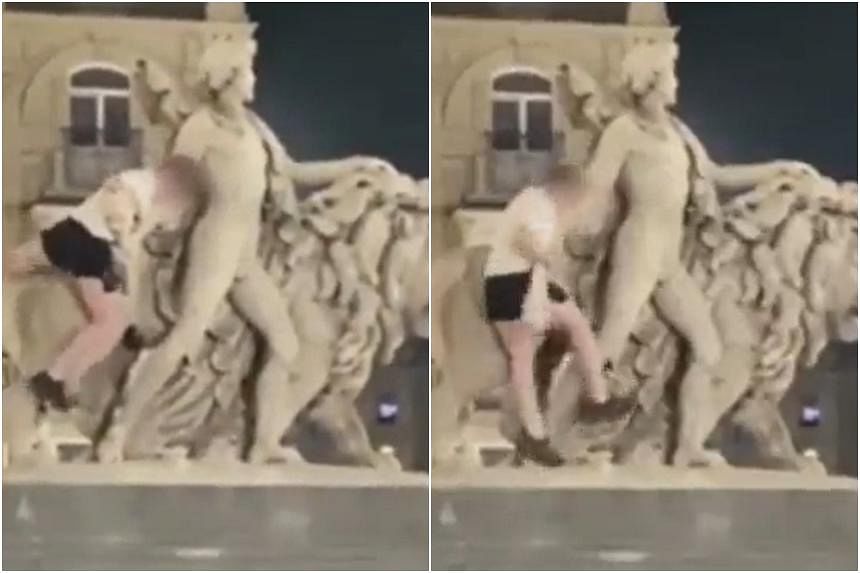
An Irish tourist may have to foot a staggering bill of around €17,600 (S$26,000) for breaking a portion of a recently restored statue in Brussels.
The incident occurred on Sunday and was first reported by local newspaper Het Nieuwsblad.
The man, identified as an Irish national, was allegedly intoxicated. He reportedly wanted to have a photo taken while sitting on the back of the statue, which features a lion and a man holding a torch.
In a video circulated online, the tourist is seen trying to get down from the statue.
He balances himself by holding on to the torch, which then breaks off.
He was later arrested at a fast food restaurant, reported Het Nieuwsblad.
The building’s management has reportedly called for the tourist to foot the cost of the repairs.
The damaged statue is one half of a pair of lion statues located outside the stock exchange building, known as The Bourse, in the Belgian capital.
Just a day before the incident, the building had been reopened to the public after a three-year restoration project that cost €90 million (S$131 million). The statues were part of the restoration.
Mr Nel Vandevennet, the project manager for the restoration, said the building and statues were heritage listed.
The repairs will cost a lot of money because “the work will have to be done by real craftsmen”, he told news outlet VRT NWS.
He noted that it would take at least a few weeks or even months to get the work done.
“We thought the sculptures would enjoy greater respect. We just think it’s very sad this happened,” Mr Vandevennet said.
This is not the first time tourists have behaved badly.
In July, a tourist defaced part of Rome’s Colosseum when he used a key to carve out his and his girlfriend’s names on a wall.
Earlier in 2023, Indonesia’s Bali island banned tourists from riding motorcycles after a string of road accidents and even deaths.
Join ST's Telegram channel and get the latest breaking news delivered to you.
- Tourist attractions
Read 3 articles and stand to win rewards
Spin the wheel now

‘Drunk’ Tourist Breaks Belgian Statue Day After it Reopened Following Three-Year Restoration
The restoration of the statue alone cost nearly $19,000, while upgrades to the building behind it added up to nearly $96 million.
A day after reopening to the public following three years of renovations, an Irish tourist reportedly chipped off a piece of a historic lion statue in Brussels.
The unidentified man said to be intoxicated, climbed the lion to pose for a photo on Sunday night, as reported by the Brussels Times .
A video shows the man inadvertently snapping off the torch as he climbed down, eliciting shocked reactions from onlookers.
Police arrested the individual at a nearby fast food joint shortly after. He allegedly informed them he was unaware of the extent of damage he had caused.
The statue's recent restoration came with a hefty price tag of approximately $19,000. Additionally, upgrades to the adjacent Stock Exchange building amounted to nearly $96 million over the last three years, as reported by the Belgian newspaper Het Nieuwsblad .
The lion statue needs further repairs, and the building's management expects the tourist to pay for the damage.
"The repairs are going to cost a lot of money because the work will have to be done by real craftsmen," said Nel Vandevennet, who supervised the prior restoration, to Belgian news outlet VRT . He added, "It is listed heritage and there will be follow-up from the monuments and landscapes agency of the Brussels region."
Vandevennet anticipates the restoration might take several weeks, if not months.
"We thought the sculptures would enjoy greater respect," Vandevennet said. "We just think it’s very sad this happened."
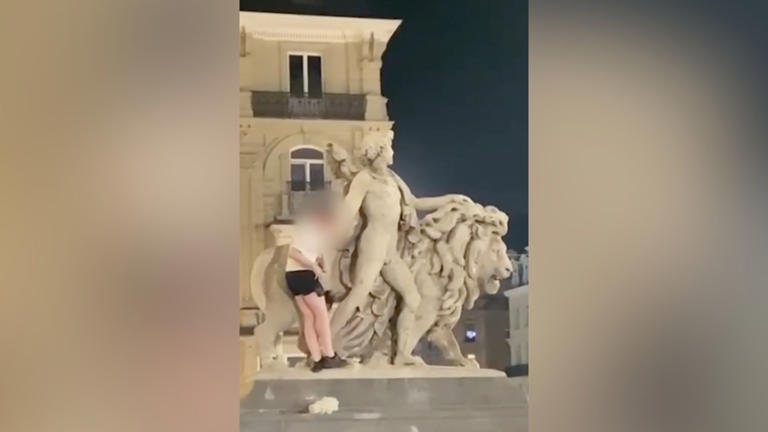

IMAGES
VIDEO
COMMENTS
Manneken Pis (Dutch for 'Little Pissing Man'; Dutch: [ˌmɑnəkə(m) ˈpɪs] ⓘ) is a landmark 55.5 cm (21.9 in) bronze fountain sculpture in central Brussels, Belgium, depicting a puer mingens; a naked little boy urinating into the fountain's basin. Though its existence is attested as early as the mid-15th century, Manneken Pis was redesigned by the Brabantine sculptor Jérôme Duquesnoy the ...
If you are not familiar with it, Manneken-Pis is a bronze statue of a small naked peeing boy. The iconic fountain dates from the 17th century, with its origins going back to the 14th century. It's one of the most popular places to visit in Brussels. Indeed, no visit to Brussels would be complete without taking a selfie with its most famous ...
[collapsed title="History of Manneken-Pis"] Manneken-Pis was at first a fountain that played an essential role in the former distribution of drinking water since the 15th century. The system was well-known in all of Europe. Towards the end of the 17th century, the statue became more and more important in the city life. It was also a survivor of the bombardment of Brussels in 1695. Manneken-Pis ...
Last but not least, Brussels is home to a third peeing statue: Het Zinneke or Zinneke Pis. This statue of a peeing dog was designed by Belgian sculptor Tom Frantzen in 1998, making it the youngest of Brussels' peeing statues. As you might have guessed, this statue is a reference to Manneken Pis (#1 on this list) and Jeanneke Pis (#12 on this ...
The statue of Jan Van Eyck is found in the heart of Bruges in the namesake Jan Van Eyck Square. It was created by Belgian sculptor Hendrik Pickery and unveiled in 1878. The bronze statue shows a standing figure of van Eyck holding a paintbrush and a palette, with his gaze directed downwards, contemplating his next stroke.
Another curiosity of Belgian tourism but if you are going to visit the peeing boy and the Grand Place you will likely pass this statue by en route. ... Several are listed on Tripadvisor under a confusing variety of names: Bronze equestrian statue of King Albert I of Belgium (Ghent), King Albert I Memorial (Nieuwpoort), Statue Of King Albert I ...
Manneken Pis is a statue. It's a real life statue of a little boy, a toddler, of a couple of years old. But it's not just any statue, it's also a fountain. That's right, the statue of the little boy spouts water. I presume you can guess where the water spouts from. Yes indeed: his penis. The boy-statue is actually continuously peeing.
The statue itself recently celebrated its 400th anniversary! To admire the original sculpture, you'll have to visit the Museum of the City of Brussels, which is housed in the Maison du Roi. This splendid building on the iconic Grand-Place is where this child, who became the most famous boy in Belgium, has now taken up residence. He has become ...
Perhaps one of the most famous (and amusing) tourist attractions in Brussels is the Manneken Pis. This tiny statue of a boy peeing is located a two-minute walk behind Grand Place. Built on a fountain essential to water distribution in 15th-century Brussels, this statue is an iconic landmark that attracts thousands of visitors every day.
Discover the most important attractions and monuments in Brussels, and all of the unmissable sights if you visit the Belgian capital. Civitatis Brussels. Travel Guide General Information General Information. close. General Information. ... The famous Manneken Pis is a statue of a small boy urinating into a fountain's basin. Discover why it ...
Manneken Pis. This is the most famous symbol of Belgium. Location: brussels, next to grand place. It is a small status of a kid... 24. Bayernwald. Unlike the sandbagged trenches you see in other locales, the branch-woven German trenches at Bayernwald have a... 25. Peter Paul Rubens Statue.
The statue seen on the street is a replica of the 1960s, while the original is in the Brussels city museum. Manneken Pis Statue, one of the most curious landmarks in Belgium ... Flanders Fields of World War 1, the remarkable Tyne Cot Commonwealth War Graves Cemetery and Memorial is a must-visit in Belgium to truly grasp the enormity of the ...
As the tourist tried to climb down, a part of the statue, believed to be the torch, broke off. 3 An allegedly intoxicated tourist has been filmed trying to ride a lion state in Belgium with his ...
Chock-full of historical attractions, it's almost impossible to create an exhaustive list of places to visit in Belgium. But if you're planning a trip in the near future, make sure these Belgium attractions are on your itinerary: St. Peter's Church - Leuven. St. Bavo's Cathedral - Ghent. The Belfry Tower - Bruges.
5. Politics. As we mentioned earlier, Belgium is famous for being the political center of Europe, and Brussels takes center stage. Le Palais De Justice in Brussels is the world's largest court at 26,000 square meters (28,000 square feet).
This complex piece of art was the epitome of artistry when it was completed; it combined a traditional, Christian subject matter with an intricate and realistic design that set a new and challenging bar for future artists. LANDMARK 5. The Grand Place is one of the most well-known famous landmarks in Belgium.
Belgium falls through the cracks. Wedged between Germany, France, and the Netherlands, and famous for waffles, Smurfs, and a statue of a little boy peeing, it's no wonder it can get lost in the mix. But Belgium rewards with richer sights than you might expect — and fewer tourist crowds. You'll encounter some of Europe's finest cuisine, including the best beer, creamiest chocolates, and ...
An Irish tourist has been filmed climbing on top of a lion statue outside the Brussels stock exchange and damaging it as he tried to dismount. In the video shared by Belgian media outlet, Sudinfo ...
A tourist climbed onto a historic statue in Brussels, Belgium, on Sunday and accidentally broke a portion of it, Brussels police told Insider in a statement. The incident was first reported by the ...
The statue, outside the Brussels stock exchange, had just been restored at great cost. ... Video, 00:00:23 Tourist climbs Brussels statue, breaks it. Subsection. Europe. Published. 14 September ...
A tourist climbed an iconic statue in Belgium and ended up causing a staggering $19k in damages. One holidaymaker has really made his mark on the European city after he was caught gallivanting on the lion statue at the Brussels Stock Exchange in Belgium on Sunday (10 September).. The man ended up breaking part of the cultural monument just one day after it had been reopened to the public ...
An Irish tourist may have to foot a staggering bill of around €17,600 (S$26,000) for breaking a portion of a recently restored statue in Brussels. The incident occurred on Sunday and was first ...
The restoration of the statue alone cost nearly $19,000, while upgrades to the building behind it added up to nearly $96 million ... 'Drunk' Tourist Breaks Belgian Statue Day After it Reopened ...